
About UsThe Numismatic Bibliomania Society is a non-profit organization promoting numismatic literature. For more information please see our web site at coinbooks.org SubscriptionsThose wishing to become new E-Sylum subscribers (or wishing to Unsubscribe) can go to the following web page link MembershipThere is a membership application available on the web site Membership Application To join, print the application and return it with your check to the address printed on the application. Membership is only $20 to addresses in the U.S., $25 for First Class mail, and $30 elsewhere. For those without web access, write to: David M. Sundman, Treasurer AsylumFor Asylum mailing address changes and other membership questions, contact David at this email address: dsundman@LittletonCoin.com SubmissionsTo submit items for publication in The E-Sylum, just Reply to this message, or write to the Editor at this address: whomren@gmail.com
BUY THE BOOK BEFORE THE COIN |
- WAYNE'S WORDS: THE E-SYLUM MAY 11, 2014
- LAKE BOOKS SALE #118 PRICES REALIZED AVAILABLE
- KOLBE-FANNING SALES 134-135 CLOSE MAY 15-16, 2014
- ERIC NEWMAN'S LATEST CONTINENTAL CURRENCY DOLLAR RESEARCH
- NEW BOOK: MORGAN DOLLAR
- NEW BOOKS IN THE MONETA SERIES: #173-175
- NEW BOOK: THE TOKENS OF WALES
- HENRY BERGOS
- THE MINT REMINISCENCES OF GEORGE ESCOL SELLERS
- MORE ON THE BCD LIBRARY OF GREEK NUMISMATICS
- NOTES FROM E-SYLUM READERS: MAY 11, 2014
- HOW LONG IT TAKES TO CUT A DIE
- ODYSSEY SS CENTRAL AMERICA RECONNAISSANCE DIVE
- CENTRAL AMERICA INITIAL FIND IMAGES
- WAYNE'S NUMISMATIC DIARY: MAY 11, 2014
- JOHN FORD AND PHOTOGRAPHER MAUREEN CLARK
- QUERY: RETAIL COIN DEALERS ASSOCIATION
- MORE ON ENGRAVING STYLES
- MORE CAVE PAINTING ART IN NUMISMATICS
- VOCABULARY WORD: CONSIMILAR
- EXCURSION INLET P.O.W CAMP CANTEEN SCRIP
- QUERY: WHEATCROFT COAL MINING TOKEN
- MARTHA WASHINGTON PATTERNS OFFERED
- WOMEN ON ANCIENT COINS
- BALDWIN’S ARIELLE COLLECTION PART TWO
- NUMISMATIK LANZ AUCTION SALE 158
- GORNY & MOSCH JUNE 2014 GEMS AND CAMEOS
- CANADIAN $2 BILL INUIT SCENE BACKSTORY
- THE REFORMATION ON COINS AND MEDALS
- MUSEUM PIO XII BRAGA NUMISMATIC EXHIBIT
- LUSITANIA SINKING: MEDALS AS WAR PROPAGANDA
- NEIL SHAFER'S 'MONEY OF THE PEOPLE' COLLECTION
- COIN DESIGN COMPETITIONS
- JERSEY COIN HOARD EXTRACTION DONE IN PUBLIC
- THE TYRANT COLLECTION
- FEATURED WEB PAGE: BLOOD MONEY
Click here to access the complete archive
To comment or submit articles, reply to whomren@gmail.com
WAYNE'S WORDS: THE E-SYLUM MAY 11, 2014

Our new subscribers this week include Louie Joo, Chris Komondy and Jeremy Milligan. We have 1,729 email subscribers.
Happy Mother's Day, Moms. This week we open with notes from literature dealers Fred Lake and Kolbe-Fanning, five new books, and late word of the loss of another numismatic bibliophile, Henry Bergos.
Other topics include the reminiscences of George Escol Sellers, gold coins and bars newly recovered from the SS Central America, P.O.W. canteen scrip, the Martha Washington patterns, women on ancient coins, and Neil Shafer's 'Money of the People' collection.
To learn more about Beethoven’s lost penny, Eric Newman's latest research, John Burns' memorial dinner, Scandinavian numismatic periodicals, the Retail Coin Dealers Association, how long it takes to cut a die, and the World's Largest Meatball, read on. Have a great week, everyone!
Wayne Homren
Editor, The E-Sylum
LAKE BOOKS SALE #118 PRICES REALIZED AVAILABLE
The prices realized list for our mail-bid sale of numismatic literature #118 which closed on May 6, 2014 is now posted to the Lake Books web site and can be viewed at http://www.lakebooks.com/current.html.
The sale featured selections from the libraries of Jay H. Cline and Harry Warren. The topics included United States catalogs, Ancient and World material, U.S. reference works and related material including paper money, tokens and medals, and bulk lots of older auction sales. Our next auction will be held in August.
Cordially, Fred
Lake Books
PMB 118
6822 22nd Ave. N
St. Petersburg, FL 33710-3918
727-343-8055 FAX: 727-381-6822
KOLBE-FANNING SALES 134-135 CLOSE MAY 15-16, 2014
Kolbe & Fanning wish to remind our clients of our upcoming sales, to be held this Thursday and Friday, May 15 and 16. As announced earlier, these sales will integrate live online bidding and will be held as internet auctions, though bidders may place bids offline if they prefer (details below).
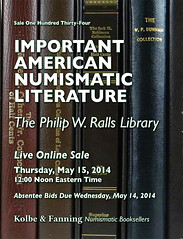
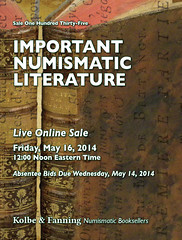
On May 15, beginning at noon eastern time, we will offer the very fine library on American numismatics formed by Philip W. Ralls, a well-known specialist in United States large cents and past president of EAC.
Highlights include:
- an impressive run of early ANA convention auction sales, including many rare catalogues.
- one of ten deluxe leatherbound copies of George H. Clapp’s work on the cents of 1798-99.
- one of ten deluxe leatherbound copies of Howard R. Newcomb’s work on the cents of 1801-03.
- an exceptional copy of the very rare deluxe leatherbound B. Max Mehl sale of the William C. Atwater collection, as well as copies of Mehl’s deluxe Morse/Faelton/Todd and Dunham sales.
- a remarkable collection of the very rare finely bound deluxe catalogues produced by Superior for a number of their most important sales; usually produced in only ten copies, the catalogues include the 1986 Robbie Brown, 1989 Jack Robinson, 1991 Dennis Mendelson, 1991 Lee Kuntz, 1992 Roger Cohen, and other sales.
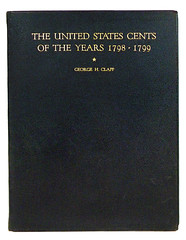
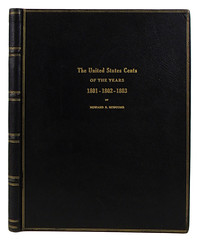
The following day, May 16, will see a second session offered, also beginning at noon eastern time, consisting of important numismatic books from around the world.
Highlights include:
- a set of Mazzini’s important work on Roman imperial coins.
- a copy of Giel’s rare Antiken Numismatik Südrusslands.
- a complete run of the Numismatische Zeitschrift (Wien).
- de Morgan on Persian coins.
- both parts of Hess’s 1931-32 Dubletten Russischer Museen sale.
- a nearly complete set of the Proceedings of the Moscow Numismatic Society.
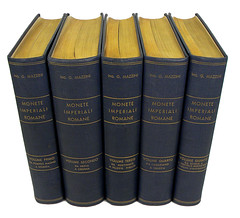
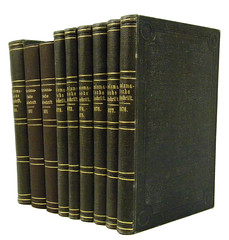
With the introduction of live online bidding, bidders will be able to participate in each sale online as they would in a live auction, using the custom bidding platform developed for Kolbe & Fanning by the popular online auction service iCollector.com. To see the new Kolbe & Fanning live online bidding site, please go to auction.numislit.com. Bidders preferring to bid by mail, fax, phone or email may continue to do so, but all such absentee bids must be received by May 14. Absentee bids cannot be accepted on the sale dates.
Kolbe & Fanning’s website is www.numislit.com and their live online site can be reached at auction.numislit.com. We look forward to your participation.
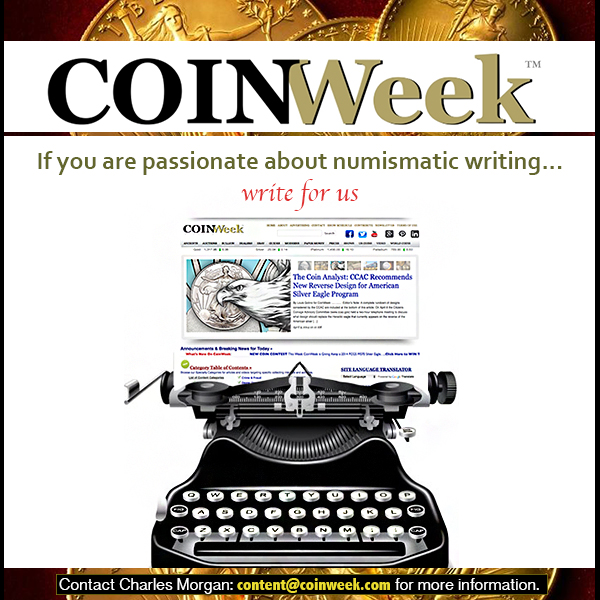
ERIC NEWMAN'S LATEST CONTINENTAL CURRENCY DOLLAR RESEARCH
Eric Newman writes:
In November of 2012, you asked for my thoughts on recent postings regarding the origins of the coined 1776 Continental Currency dollar. My response was that I had been working with another researcher regarding that same matter. I also noted that answers to old problems are tough, and we continued delving into the subject until very recently.
Maureen Levine and I have now completed a detailed article on this topic, and it has been accepted for publication in the July issue of The Numismatist. Our main focus has been uncovering and examining the earliest printed material relating to the Coined Dollar, and we have discovered exciting new information that we hope will continue to spark numismatic discussion and debate.
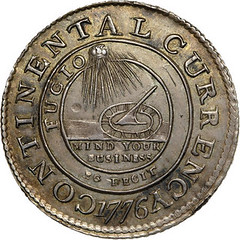

NEW BOOK: MORGAN DOLLAR
 Whitman Publishing announces the release of Morgan Dollar: America’s Love Affair With a Legendary Coin, by Michael “Miles” Standish. The 160-page hardcover book will be available May 27, 2014, from booksellers and hobby shops nationwide, and online (including at www.Whitman.com), for $29.95.
Whitman Publishing announces the release of Morgan Dollar: America’s Love Affair With a Legendary Coin, by Michael “Miles” Standish. The 160-page hardcover book will be available May 27, 2014, from booksellers and hobby shops nationwide, and online (including at www.Whitman.com), for $29.95.
Miles Standish is vice president and senior grader of PCGS. His new book presents an engaging history and coin-by-coin study of the famous Morgan silver dollar. Morgan Dollar: America’s Love Affair With a Legendary Coin features the recollections of famous dollar dealer John B. Love, beautiful high-resolution photographs of the Coronet Collection (ranked by PCGS as the “Number One Finest Morgan Dollar Set of All Time”), certified-coin populations, retail prices in multiple grades, and other valuable contents for collectors, investors, and students of American history.
“I predict that this will be the ‘go to’ book on the Morgan dollar,” said John Mercanti, 12th chief engraver of the U.S. Mint, who wrote the foreword. “It’s informative, easy to read, and perfect for the experienced Morgan collector or for the new collector just starting out.”
 Various sections discuss America during the Morgan dollar era; the anatomy of the coin’s design; a market study going back to 1946; a year-by-year analysis of the series, including Philadelphia, New Orleans, Carson City, Denver, and San Francisco coins; and Morgan dollar Proofs. For further research the book is rounded out with end notes, a bibliography, and an index.
Various sections discuss America during the Morgan dollar era; the anatomy of the coin’s design; a market study going back to 1946; a year-by-year analysis of the series, including Philadelphia, New Orleans, Carson City, Denver, and San Francisco coins; and Morgan dollar Proofs. For further research the book is rounded out with end notes, a bibliography, and an index.
Morgan Dollar: America’s Love Affair With a Legendary Coin can also be borrowed for free as a benefit of membership in the American Numismatic Association, through the Dwight N. Manley Numismatic Library.
Morgan Dollar: America’s Love Affair With a Legendary Coin
By Michael “Miles” Standish; foreword by John M. Mercanti
ISBN 0794839533
Hardcover, 8.5 x 11 inches
160 pages
Full color
Retail $29.95 U.S.
For more information, or to order, see: (www.whitman.com/store/Inventory/Detail/Morgan-Dollar-Americas-Love-Affair-With-A-Legendary-Coin+0794839533)
NEW BOOKS IN THE MONETA SERIES: #173-175
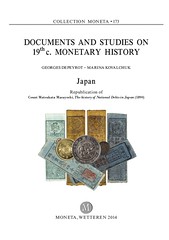 M 173, Japan, Count Matsukata Masayoshi, The history of National Debts in Japan (1890), G. Depeyrot, M. Kovalchuk, ed., Collection Moneta, 173, Wetteren, 2014, 166 p
M 173, Japan, Count Matsukata Masayoshi, The history of National Debts in Japan (1890), G. Depeyrot, M. Kovalchuk, ed., Collection Moneta, 173, Wetteren, 2014, 166 p
www.moneta.be/volumes/moneta_173.htm
M 174, Japan, Count Matsukata Masayoshi, Report on the adoption of the gold standard in Japan (1899), G. Depeyrot, M. Kovalchuk, ed., Collection Moneta, 174, Wetteren, 2014, 336 p ISBN 978-94-91384-42-4
www.moneta.be/volumes/moneta_174.htm
M 175, Japan, Count Matsukata Masayoshi, Report on the post-bellum financial administration in Japan, 1896-1900 (1901), G. Depeyrot, M. Kovalchuk, ed., Collection Moneta, 175, Wetteren, 2014, 170 p ISBN 978-94-91384-43-1
www.moneta.be/volumes/moneta_175.htm
NEW BOOK: THE TOKENS OF WALES
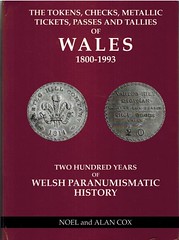
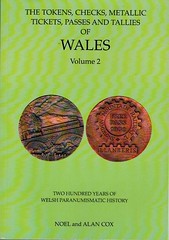
Yosef Sa'ar of Elat on the Red Sea writes:
I just purchased copies of two books by Noel and Alan Cox, "The Tokens, Checks, Metallic Tickets, Passes and Tallies of Wales 1800-1993". The first edition came out in 1994 and Volume 2 two years ago. For me the important part was that both volumes contain chapters on Transport Tokens and Passes.
Of particular interest were the number of tokens and passes used on railways without any indication they were for transport. Also there is a photo and information on the scarce, oval Newport Transporter Bridge halfpenny. Likewise, there is a listing for a brass pass used on the Penmaenpool Bridge, a piece completely new to me.
Collectors interested in these books may contact: noel.cox1 (at) btinternet (dot) com. Prices are GBP 20 per volume plus shipping.

Archives International Auctions, Part XIX
U.S. & Worldwide Banknotes, Scripophily, Security Printing Ephemera, "The Tasmanian Devil Collection" of rare Australian & New Zealand Banknotes and Further Selections from the Hamtramck Collection.
Highlights include:
- Lot 33 Commonwealth of Australia, Reserve Bank, ND (1974) Issue $50 Specimen Banknote
- Lot 494 Bank of America, 1879 Specimen $10,000 Clearing House Certificate
- Lot 589 Accelerating Steam Navigation Co., 1852 Issued Stock Certificate - Obsolete Look-A-Like
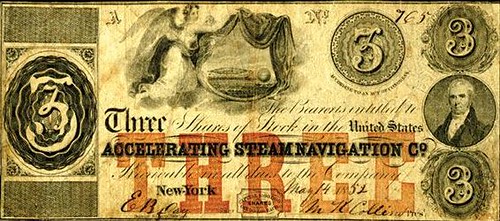
1580 Lemoine Avenue, Suite #7
Fort Lee, NJ 07024
Phone: 201-944-4800
Email: info@archivesinternational.com
WWW.ARCHIVESINTERNATIONAL.COM
HENRY BERGOS
On Meeting Don Taxay
"I seem to have missed the earlier discussion about Don Taxay. Sometime in the early/mid 70s I went to the American Numismatic Society to ask about a 1915 cent I had just bought as a proof. Doc Brady, I think, said that only a few people could tell which ones are or aren't proofs. He then called me back and told me that Don was upstairs in the library on the second floor, and that he was one of the few. I excused myself and asked him about the coin. His eyes lit up and he pronounced it Proof. I thanked him profusely. He was a delight to meet. I THINK we met a few more times but it's been a LONG time.
Regarding the most important numismatic books, I would nominate Taxay's books on "The U.S. Mint and Coinage" followed by his book on Commemoratives ONLY after Dickinson and Walter Breen's Encyclopedia. When I moved I took them with me in my hand luggage; they were that important to me."
To read the complete E-Sylum article, see: www.coinbooks.com/esylum_v09n06a23.html
On Opening Virgin Books
"Regarding the discussion about opening up an unsplit book:. I attended the CW Post campus of Long Island University in 1974/5. I was doing some research on English law and requested a book that turned out to be an original from 1763. It was unsplit!!! I asked what to do about it and the library assistant told me to do as I liked, so I split some of the pages. It kinda hurt to do it. What good is a book that has never been read? We as book lovers like to have pristine copies, but unread??? I have two copies of a book one of my Professors wrote: one in the shrink wrap and one that I read."
To read the complete E-Sylum article, see: www.coinbooks.org/esylum_v08n11a13.html
On Inflation Currency
"When I rented a store in Israel during our hyperinflationary period, just over 500%/year, in 1984 I had to wrote a check for over 1 1/2 million Shkolim. I quipped to my banker as I did it that I was getting writers cramp from this large number. He almost fell off his chair laughing. It took two lines to write it."
To read the complete E-Sylum article, see: www.coinbooks.org/esylum_v08n03a13.html
On Kelley Reprints
"I was the distributor in the Numismatic community for Kelley in the mid-1980s. Fred Cheeseman was the office manager in New York City (Broadway and 25th street), for the NJ company. They were already in bad shape and had warehouses FULL of unsellable scholarly books. Most were printed in the mid-1960s. The idea was to sell to libraries and school libraries. I was not allowed to sell to them. I was being charged 10 or 15% of list price and I sold them at 35-60%. Sales were very poor. I sold between 1987 and 1990.
To read the complete E-Sylum article, see: www.coinbooks.org/esylum_v08n25a21.html
On Kam Ahwash
"I was in line for a photo ID at a Grand Central Convention and someone up the stairs and around the corner called out; "Kam! Kam Ahwash! Has any one seen Kam Ahwash?" He was standing right behind me. I am 6' tall and he was about 5'3" maybe 5'4". I turned around and took a quarter step forward, and with Kam's nose about embedded in my chest called back: "Kam? NOPE, I don't see him." About 20 of us laughed aloud. Kam was the BEST!!! No one was nicer or more fun to be around. He had a SHARP sense of humor and loved to share OUR hobby. He is missed by all who knew him no matter how much time passes. Another who will be spoken of highly - MANY MANY years from now."
To read the complete E-Sylum article, see: www.coinbooks.org/esylum_v08n14a20.html
George Kolbe writes:
Henry Bergos was a difficult man. I doubt he would have denied it; he would likely have been proud of it. One thing about Henry was undeniable: he loved his numismatic library, particularly in terms of the information it provided him. Henry either liked you or he did not, although the approval dial was often capable of movement to either side of the meter. He inspired the same dichotomy in many of those who knew him.
I liked Henry. Yes, he could engage you in seemingly interminable conversation, but Henry was an extremely intelligent man and much of his commentary on the human condition was unexpectedly insightful. Like so many of us, Henry Bergos was an original, though he must be accorded extra credits. Several years ago he remarried and moved from New York to Georgia. He had been in poor health for several years and his passing comes as no great surprise, though it is unfortunate that the numismatic community did not learn of his passing earlier.
THE MINT REMINISCENCES OF GEORGE ESCOL SELLERS

While recently revisiting From Mine to Mint, Roger Burdette's truly definitive and encyclopedic examination of the processes of the various US Mints during the 19th and early 20th centuries, I was once again reminded of Early Engineering Reminiscences (1815-40) of George Escol Sellers, edited by Eugene S. Ferguson.
Sellers, born in Philadelphia in 1808, was a very active engineer. He published his reminiscences of his career in a series of articles in American Machinist between 1884 and 1893. In 1965, Eugene Ferguson re-published the collected articles under the auspices of the Smithsonian Institution (as Bulletin 238).
For numismatists, the heart of the book is the 18-page Chapter 9, which discusses Sellers' interactions with the Mint (among other things, he designed the steam engines for the branch mints in Charlotte and Dahlonega) and includes a number of very nice illustrations of mint machinery.
Taking the reminder to heart this time, I looked on bookfinder.com, where I saw a copy listed for $10 (delivered), which I couldn't resist.
I got it yesterday and was surprised to see that it's an inscribed copy: "To John W. Maxson, Jr. with my best thanks, Eugene S. Ferguson, Mar. 2, 1965" In his Preface, Mr. Ferguson thanks Mr. Maxson for having "responded with helpful answers to my unbidden queries."
A brief Google search reveals that Mr. Maxson provided a review of the book in the October 1965 issue of The Pennsylvania Magazine of History and Biography. Mr. Maxson says, "This is a book with something for almost every historical reader, for it touches on an astonishingly broad range of subjects - the development of fire engines, screw-cutting lathes, U. S. Mint machinery, papermaking, railroads and locomotives, stationary steam engines, an early internal combustion engine, a fraudulent perpetual motion machine, an early electrical generator refinement, and an ingenious counterfeiter."
"[Mr. Ferguson] has taken great pains to explore the subjects and people discussed by Mr. Sellers in order to check details, explain now-obscure allusions, and bring in additional related information. By so doing, he has made this collection very complete and valuable. He has also managed, through diligent searching, to round out the book with a helpful and fascinating assortment of illustrations, many of them quite rare."
A man after my own heart, Mr. Maxson concludes his review with: "Even at four or five times the price, this would be a worthwhile addition to the library of any student of Pennsylvania history; at the Government Printing Office's price of $2.50, it is a bargain not to be missed."
While I did not find a biography of Mr. Maxson, from what I did find I infer that he was a historian of early American paper manufacturing (with five citations in the library of the American Philosophical Society) and a 1948 graduate of Amherst College who passed away in 2001.
I can now look forward to broadening my knowledge of the early Mint's machinery (and paper-making - without which there can be no currency - and, perhaps, counterfeiting), with Mr. Ferguson, Mr. Sellers and Mr. Maxson as my guides.
To read Eugene Ferguson's Wikipedia page, see: Eugene S. Ferguson (en.wikipedia.org/wiki/Eugene_S._Ferguson)
To read about the Ferguson Prize awarded by the Society for the History of Technology, see: The Ferguson Prize (www.historyoftechnology.org/about_us/awards/ferguson.html)
To read the complete issue and Maxson review, see: Pennsylvania Magazine of History and Biography, vol.89, issue 4, October 1965 (journals.psu.edu/index.php/pmhb/issue/view/2435)
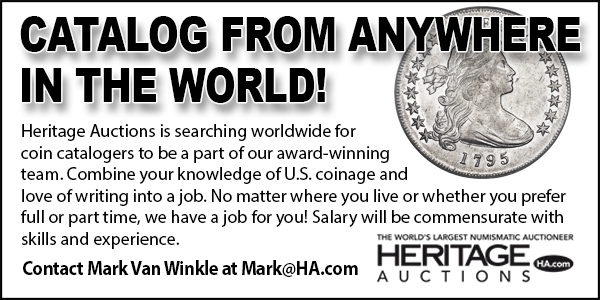
MORE ON THE BCD LIBRARY OF GREEK NUMISMATICS
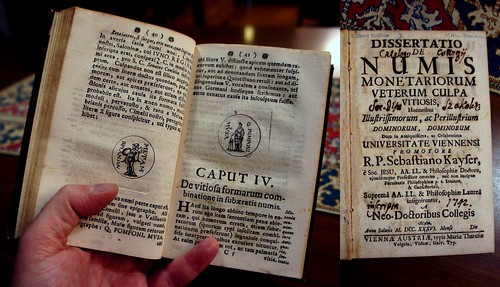
BCD, as all on this list should know, is one of the most important collectors of Greek coins of all time, and through the sale of his collection he fostered the publication of many fundamental research catalogues. What is probably less well known to the general numismatic community is that BCD, still to this day, maintains a comprehensive research library, aimed at Greek coinage, but because of the nature of its references, of interest to any student of ancient coins, and that he makes the library available for researchers, e.g. those compiling die-studies for whom his comprehensive auction catalogues are indispensable. I was fortunate to pay an extended visit to his library recently. BCD told me he would be happy for me to share some photographs, as it will give potential visitors an idea of the wealth of the resource available, and of its arrangement. So I have uploaded about 20 pictures of the library and/or specific books here:
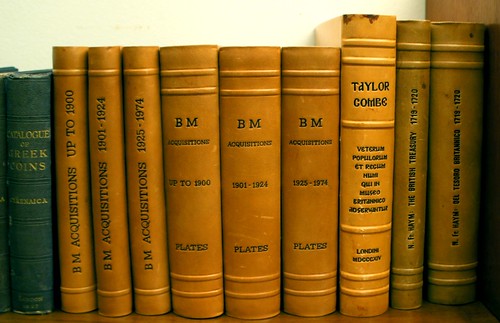
Slideshow (requires Java)
www.flickr.com/photos/ahala_rome/sets/72157631713151633/show/
Individual pictures
www.flickr.com/photos/ahala_rome/sets/72157631713151633/detail/
(For those who are not aware, please do not inquire as to the letters BCD. The great collector wishes to remain known simply as BCD, and not by any other name. That's how it is).
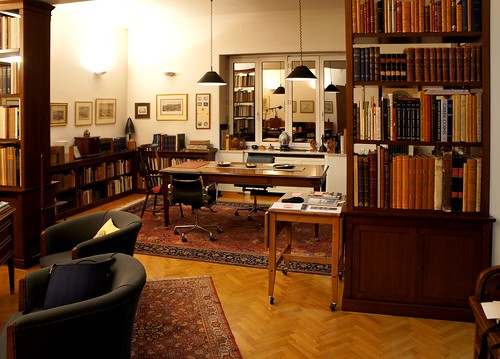
To read the complete article, see: Numismatic Library of BCD (groups.yahoo.com/neo/groups/RROME/conversations/topics/3037?var=1)
To read the earlier E-Sylum article, see: GREEK NUMISMATIC LITERATURE SALE JUNE 2014 (www.coinbooks.org/esylum_v17n19a05.html)
NOTES FROM E-SYLUM READERS: MAY 11, 2014
Pacific Coast Numismatic Society Publications Dave Lange writes:
In response to Bruce Smith's request about the Pacific Coast Numismatic Society's Numismatic Bulletin, this publication was issued in magazine format only from 1948 through 1952. It is probably this series that he has seen. Since that time there has been only a conventional newsletter that continues to the present day. I was its editor during the mid-late 1980s, and I also edited the society's research publication Journal of the Pacific Coast Numismatic Society, which has since been discontinued in favor of an annual paper competition. I used to have a complete set of the 1948-52 NB, but I sold it some years ago. I still have a complete collection of the Journals.
The society's present recording secretary is numismatic author William Hyder. He informs me that he can provide further information about the availability of issues and has agreed to publish his email address: bill.hyder@gmail.com.
To read the earlier E-Sylum article, see: QUERY: NUMISMATIC PERIODICAL INDEXES SOUGHT (www.coinbooks.org/esylum_v17n19a13.html)
Scandinavian Numismatic Periodical Index Morten Eske Mortensen writes:
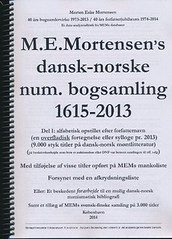 A great number of separately published various indexes to separate Scandinavian numismatic magazines from the last 100 years are listed throughout my massive, new Scandinavian numismatic bibliography, The "Catalogue of the MEM Scandinavian numismatic library 1615-2013", Copenhagen 2014, 800 pp, A4
It also includes a mega-index to a great number of Scandinavian numismatic magazines, all compiled into one big, massive index.
A great number of separately published various indexes to separate Scandinavian numismatic magazines from the last 100 years are listed throughout my massive, new Scandinavian numismatic bibliography, The "Catalogue of the MEM Scandinavian numismatic library 1615-2013", Copenhagen 2014, 800 pp, A4
It also includes a mega-index to a great number of Scandinavian numismatic magazines, all compiled into one big, massive index.
For more information, see:
numisbooks.dk/info/demodatabankCatalogue
OfTheMEMlibrary1615-2013.htm
To read the earlier E-Sylum article, see: QUERY: NUMISMATIC PERIODICAL INDEXES SOUGHT (www.coinbooks.org/esylum_v17n19a13.html)
Another Bald Hobo Inspired by last week's hobo nickel carving of a bald man, Fred Michelson writes:
This one is "Chrome Dome" by Darin Bilstad, a really good hobo nickel carver.
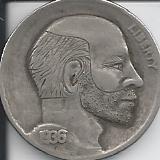
To read the earlier E-Sylum article, see: HOBO NICKELS: I VILL AND JASON'S UNCLE (www.coinbooks.org/esylum_v17n19a28.html)
St. Andrew's Cross Regarding last week's mention of the Scottish flag, Chip Howell writes:
Just in case you weren't aware, this is also called the "St. Andrew's Cross" & is a constituent of the Union Flag (the British flag, often incorrectly called a "Union Jack" although a "Jack" is really a naval flag). In Heraldry, this is not considered a "cross" which has to be upright (i.e., "pointing north" on a map): a saltire points to the corners of the flag, e.g. the Confederate battle flag. For illustrations, see Wikipedia: en.wikipedia.org/wiki/Union_Jack#Since_1801
To read the earlier E-Sylum article, see: COINS STRUCK FOR 2014 GLASGOW GAMES (www.coinbooks.org/esylum_v17n19a33.html)
Scottish Merk Exchange Rates
Last week's issue included this statement:
"The merk was a silver coin in use in Scotland in the 16th and 17th centuries, worth 13 shillings and 4 pence or about one English shilling. Half-merk and quarter-merk coins were also issued."
Chip Howell writes:
This struck me as odd, mostly because I knew that "13 & 4" is actually 2/3 of an ENGLISH pound: it turns out that's also true with respect to the SCOTTISH pound (i.e., 1 pound [Scottish] = 1.5 merks = 1.5 shillings [English]). Wikipedia bore out the text was not a typo, so it appears Scottish:English traded at 40:3.
Wikipedia says the coin was later re-evaluated as 14 shillings [Scottish] - perhaps to make it exactly two thirds of a Guinea? Great Britain standardized the Guinea at 21 shillings, i.e., 1 pound + 1 shilling.
I note the illustration you had of a 1602 merk named "Jacobus 6" = (James VI) who in 1603 became "James I" of England as well (whence Jamestown in 1607).
To read the Wikipedia article, see: Merk (coin) (en.wikipedia.org/wiki/Merk_%28coin%29)
To read the earlier E-Sylum article, see: SCOTLAND CONSIDERS CURRENCY CHOICES (www.coinbooks.org/esylum_v17n19a34.html)
EAC & C4 Members to meet at GSNA Saturday May 17th Ray Williams writes:
The annual Garden State Numismatic Association Convention will be held May 15-17 in Somerset NJ. Besides all the other reasons to attend a coin convention, there will be a joint gathering (I hate to say meeting) of Early American Coppers Inc (EAC) & Colonial Coin Collectors Club (C4) members at 1:00 PM on Saturday May 17th at 1:00 PM.
Membership in either organization is not needed, the meeting is open to all. Please attend, get the latest on what's happening with EAC and C4, find out about EAC in Colorado last week, get a chance to look through the pages of EAC's first publication: Grading Guide for Early American Copper Coins, or just get a chance to rest your feet for a half hour or so. Questions will be answered and please feel free to bring something for show-n-tell.
Convention information can be found at: http://gsna.org/gsna_convention.html
Questions? Ask Ray Williams at njraywms@optonline.net
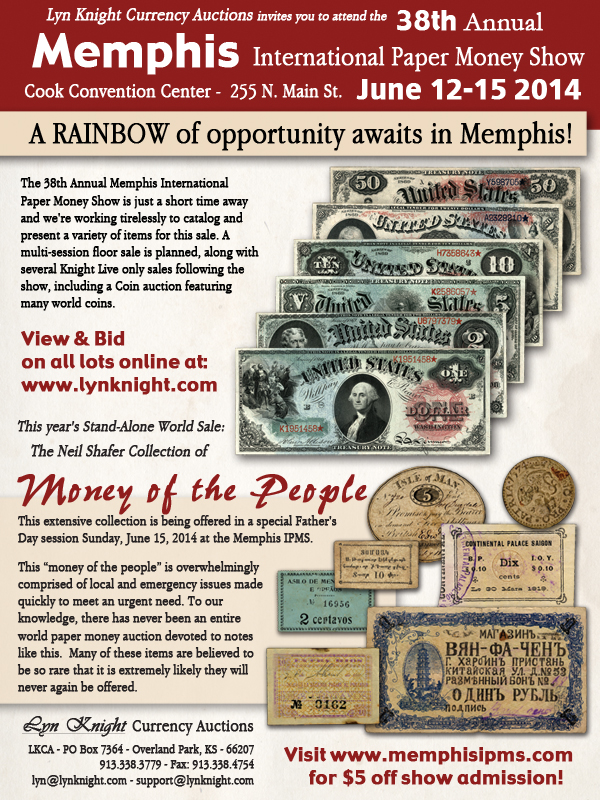
HOW LONG IT TAKES TO CUT A DIE
On the subject of time-to-cut-a-die, Ted Buttrey of the Fitzwilliam Museum, Cambridge writes:
The Roman Republican denarii struck in 82 BC were issued by three moneyers, Censorinus, Crepusius, and Limetanus. Only the coins of Crepusius have been closely studied, but it appears from the survival of all three moneyers' issues that they struck in about the same quantity over the year. There is good evidence that they struck in sequence rather than simultaneously, i.e. an active term of 18 weeks for each rather than all at once.
The obverse dies of all three moneyers were cut individually by hand, by two engravers, each with his own distinctive style. The Crepusius obverse dies number about 475, i.e. 18 weeks x 7 days not allowing for days off = 126 days, into 475 dies = roughly 4 dies per day = 2 dies per day per engraver.
(If the moneyers struck simultaneously through the year, so that the engravers were cutting dies for all of them at once, the result is the same.)
There are also the reverse dies, which were cut at the same time and which appear to be divisible into two hands. But even if they can, there is no way to discover whether the reverses were cut by the same, or by two additional, engravers.
So at a minimum, two dies a day per engraver, and maybe rather more than that, in the Rome mint of the first century BC.
To read the earlier E-Sylum article, see: HOW LONG DOES IT TAKE TO CUT A DIE? (www.coinbooks.org/esylum_v17n19a15.html)
ODYSSEY SS CENTRAL AMERICA RECONNAISSANCE DIVE
Odyssey Marine Exploration, Inc., a pioneer in the field of deep-ocean exploration, recovered nearly 1,000 ounces of gold during the first reconnaissance dive to the SS Central America shipwreck site on April 15,2014.
Recovered gold included five gold ingots and two $20 Double Eagle coins (one 1857 minted in San Francisco and one 1850 minted in Philadelphia). The gold ingots were stamped with assayer's marks and weights that range from 96.5 to 313.5 troy ounces.
The two-hour reconnaissance dive was conducted during the transit of Odyssey's research vessel, the Odyssey Explorer, from the United Kingdom to Charleston, South Carolina, to mobilize for the project, which is being conducted under contract with the receiver of Recovery Limited Partnership (RLP). RLP director of operations Craig Mullen and RLP chief scientist/historian Bob Evans accompanied the Odyssey team for the dive operation. Mr. Evans previously served as chief scientist, historian and later as curator for the initial Central America recovery operations conducted between 1988 and 1991.
During the dive, Odyssey's ROV ZEUS flew over the shipwreck to assess the current condition of the site. Gold ingots and other artifacts were clearly visible on the surface of the site during the dive and no excavation was required for their removal. Given the reconnaissance purpose of the dive, only five gold ingots, two gold coins, a bottle, a piece of pottery, a sample of the shipwreck's wooden structure, and an element of a scientific experiment that was left at the site more than 20 years ago were recovered. The positions of the recovered artifacts were documented for archaeological purposes and will be noted in the detailed site plan that is being created. The archaeological excavation of the site will be undertaken once the pre-disturbance survey provides detailed documentation of the site.
"This dive confirms for me that the site has not been disturbed since 1991, when I was last there," said Bob Evans chief scientist/historian for RLP.
The archaeological excavation, valuable cargo recovery and ship-board conservation will be conducted and underwritten by Odyssey on behalf of RLP. In return, Odyssey will receive 80% of recovery proceeds until a fixed mobilization fee and a negotiated day rate are paid. Thereafter, Odyssey will receive 45% of the recovery proceeds.
To read the complete article, see: Gold Recovered During First Reconnaissance Dive Indicates SS Central America Has Not Been Disturbed Since 1991 (www.marketwatch.com/story/gold-recovered-during-first-reconnaissance-dive-indicates-ss-central-america-has-not-been-disturbed-since-1991-2014-05-05)
CENTRAL AMERICA INITIAL FIND IMAGES
An expedition to bring back the remaining gold from a steamship that sank in 1857 off South Carolina in one of the nation's worst maritime disasters has recovered almost 1,000 ounces of gold - the first gold recovered from the wreck in almost a quarter century.

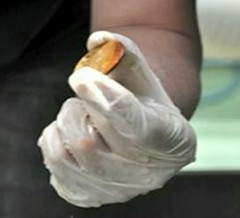 The newly recovered gold includes five gold bars and two $20 Double Eagle gold coins. One of the coins was minted in San Francisco the year that the Central America sank. The gold bars weigh between 106 and 344 ounces.
The newly recovered gold includes five gold bars and two $20 Double Eagle gold coins. One of the coins was minted in San Francisco the year that the Central America sank. The gold bars weigh between 106 and 344 ounces.
'While we weren't planning to recover gold so quickly, it did confirm that the site has not been disturbed since it was last visited in 1991 and there is gold remaining,' said Mark Gordon, Odyssey's president and chief operating officer.
An expedition that left North Charleston in April is expected to be on the site about 160 miles off the coast until late summer.
To read the complete article, see: Treasure hunters recover more than 60 pounds of gold from 157-year-old shipwreck off South Carolina coast (www.dailymail.co.uk/news/article-2620963/Treasure-hunters-recover-60-pounds-gold-157-year-old-shipwreck-South-Carolina-coast.html)
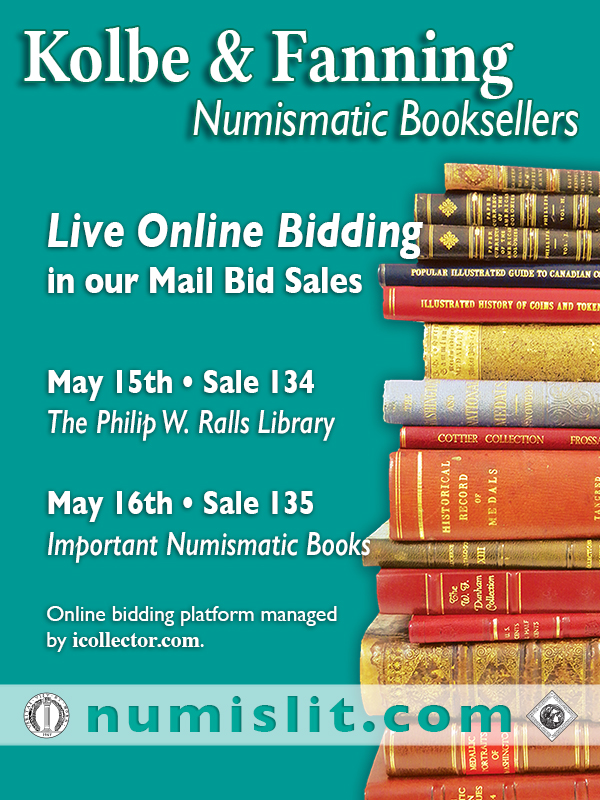
WAYNE'S NUMISMATIC DIARY: MAY 11, 2014
This was Big John's big week. Numismatic literature dealer John Burns passed away earlier this year. Pat McBride of the Pennsylvania Association of Numismatists is the executor of the estate, and I've been working with Pat and a crew of Pittsburgh-area helpers to settle John's affairs.
The crew spent these last months cleaning out John's townhouse and storage units and organizing sales of his belongings. A memorial dinner was held Friday May 9th, but before we could relax and raise a glass there was a big job to be done - selling John's massive stash of numismatic literature.
Thursday morning I got up early and pointed my car toward Pittsburgh. By 8am I'd already passed through Virginia and Maryland and crossed the Pennsylvania line. About 10:30 I arrived at the storage units where we would hold the sale. I opened the padlock and rattled open the metal door of unit 631. It was a sunny day, and the light revealed an impressive array of books.
Books lined shelves along both walls of the 40-foot long unit. Boxes lined a long table filling the center, with aisles on each side. Book, books, and more books - books on U.S. coins, world and ancient coins, paper money, tokens, medals, orders and decorations. Sets of periodicals, including bound runs of Coin Collector's Journal and The Numismatist from 1913 through 1988. Below the tables were boxes of softbound auction catalogs piled two deep.
And that was just the FIRST unit. Next door an identical 40-foot unit was similarly lined with bookshelves and piles and piles and piles of boxes of numismatic literature. God Bless the crew. It was a glorious "after" picture to pair with the "before". John's strong suit wasn't organization.
Tom Fort arrived around 11 and we did some last-minute organization. Soon our out-of-state guests arrived - literature dealers David Fanning from Ohio and Chris Komondy of Connecticut. Chris isn't well known in coin circles, but he has been involved in stamp and coin literature for decades. He worked earlier with Sanford Durst and now publishes reprints and distributes books wholesale. He had known and worked with John over the years, and the two bought and traded coin books frequently.
After some introductions and a brief tour of the units we locked up and piled in my car to head to lunch. I drove to a nearby bar and restaurant. As we settled into a booth I ordered a beer. Chris had one too. Three of us ordered the Italian Hoagie. I warned everyone they were big, but we happily stuffed ourselves while sharing tales of John Burns and Sandy Durst.
The rest of the afternoon we all spent knee deep in numismatic literature as the bidders reviewed the material. After we went our separate ways for the evening I went to the nearby mall to shop for a Mother's Day gift for my wife. I stopped in a restaurant to grab dinner and ran into Gerry Krupa, a longtime PAN show dealer from central Pennsylvania. We caught up on old times.
Friday morning I arrived at the storage lockers at 10am sharp. Tom and David were already there. I unlocked the doors and reopened for business. Today was the big day.
We knew there we some local bidders interested in the Numismatist set. Several were eager to buy individual books, but with so much to sell we had to focus on our wholesale bidders. We couldn't risk letting the sale get cherry-picked, but encouraged anyone interested to see the buyers of large lots afterwards.
Soon I was pleasantly surprised to see two E-Sylum readers arrive - Roger Persichilli and O.T. Thompson from North Carolina. It was great to meet O.T. for the first time and reconnect with Roger, whom I hadn't seen in years. Others looking over the books included PAN folks Dick Gaetano, Richard Crosby and Robert Zavos. I hadn't seen Robert in years either, and we had a great time catching up.
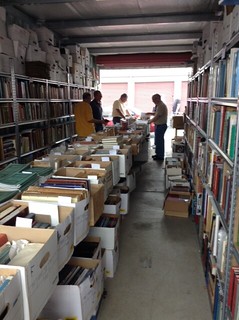
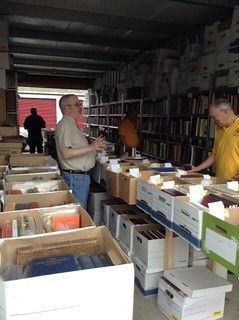
The sale was to begin at 1pm. As the hour approached more people arrived, including some locals who were misinformed by the grapevine that individual books were being auctioned. Sorry - this was organized in bulk lots, a whole rack or ten or more boxes at a time.
 While we were hoping for more local interest in the bulk lots, we weren't expecting much. It turned out to be a pretty dull auction. Most of the lots had only one interested bidder (either David or Chris), and we just recorded their interest to follow up with negotiation afterward. One lot of nine boxes drew competition, as did the Numismatist set. Both lots sold. PAN President Tom Uram won the Numismatist set (pictured at right), and friends helped him box it up.
While we were hoping for more local interest in the bulk lots, we weren't expecting much. It turned out to be a pretty dull auction. Most of the lots had only one interested bidder (either David or Chris), and we just recorded their interest to follow up with negotiation afterward. One lot of nine boxes drew competition, as did the Numismatist set. Both lots sold. PAN President Tom Uram won the Numismatist set (pictured at right), and friends helped him box it up.
With the "auction" over, Pat and I still had our toughest job ahead. We met separately with Chris and David. After much back and forth, offers, counteroffers, eye-rolling and some amusing concessions, deals were reached. We pretty much sold the inventory to the bare walls, but not before Chris talked Pat into throwing in John's Glock handgun to seal a deal. Pat added a twist of his own, with David agreeing to allow Pat and I to select a book each for our own libraries.
That caught me off guard, but it was a pleasant surprise. David was agreeable; there were no blockbuster $1,000 titles in there. Pat picked a nice antiquarian numismatic book, and I selected a bound volume of 19th century U.S. auction sales. We'll still need to reimburse the estate, but we both have nice souvenirs to remember our friend by.
Now the fun could begin. Some people were already buying books from Chris, and now others could buy some from David. He and Chris also started some horsetrading among themselves. In the end Pat and I just handed them the keys and let them go to work organizing the lockers. Both will have to come back with trucks to haul away the bulk of their booty.
We had backup plans in case we couldn't negotiate what we felt were fair prices for the estate, but Pat's long ordeal as executor was finally moving to a new phase. It will only be a matter of time before the storage units are as empty as John's old townhouse. He looked a little shell-shocked.
I guess I was a little shell-shocked, too, but glad we were able to come to a resolution. John's books were now in good hands.
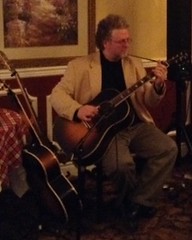 After stopping at the PAN show to visit friends and check out the nascent John Burns Reference Library I went to my hotel to get ready for the evening's memorial dinner. Over fifty people were in attendance. A guitar player played Scottish songs in honor of John's proud heritage. Rich Jewell kindly bought me a drink at the bar. I mingled with Paul Cunningham, Simcha Kuritsky, Sam and Diane Deep and many others. Tom and Gosia Fort and I grabbed seats at one of the remaining open tables.
After stopping at the PAN show to visit friends and check out the nascent John Burns Reference Library I went to my hotel to get ready for the evening's memorial dinner. Over fifty people were in attendance. A guitar player played Scottish songs in honor of John's proud heritage. Rich Jewell kindly bought me a drink at the bar. I mingled with Paul Cunningham, Simcha Kuritsky, Sam and Diane Deep and many others. Tom and Gosia Fort and I grabbed seats at one of the remaining open tables.
I mingled a bit more before the buffet-style dinner was served. One table included Gerry Krupa, Byron Weston and Al Boulanger. I recounted the story of how Ed Krivoniak managed to open John's safe. At another table I greeted Don Carlucci and Pat's wife Dawn. I was engrossed in conversation with Sam's grandson Josh Wadsworth when Tom Fort tugged at my sleeve. Gosia had sent him to tell me I'd better grab my dinner. She was right - the pickings were slim, but I managed to fill a plate with some salmon, potatoes and broccoli. It was very good.
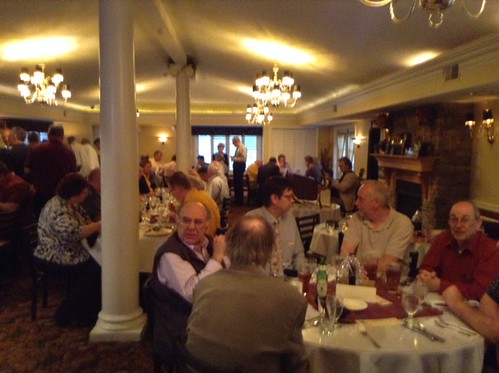
After dinner Sam worked the room, handing person after person the microphone to tell their remembrances of John Burns. It was a fun program, with lots of laughter. The big guy would have been deeply touched, and laughed along with the good-natured jabs at his personality.
Afterwards Pat and Sam ran a short auction of items to raise funds for the estate, including a 1950s ANA banquet photograph, checks signed by Walter Breen, a 1935 Pittsburgh ANA medal, and local newspaper with historic headlines such as Roosevelt's death and the bombing of Hiroshima.
Brad Karoleff needed a ride back to the hotel but first we went to the bar with Bryce Doxson to raise a glass or two to John. I hadn't laughed so hard in months. Back at the hotel Brad talked me into having yet another. Good thing all I had to do was take an elevator ride to my room.
Saturday was a travel day. After breakfast and some work on The E-Sylum I picked up a Mother's day cake for my wife and her Mom at their favorite Pittsburgh bakery. By 12:30 I was on the road back to Virginia. It's been a long adventure.
Many thanks to everyone who's helped on this project, and to all who came and shared the evening of remembrance. Rest in peace, Big John.
Byron Weston writes:
Kudos to those who organized the John Burns Celtic Wake/Roast - it was without a doubt a great honor to John. I can't remember any numismatic event where I've had such a good time - I also can't remember the last time that I've had such a good belly laugh! I especially liked the five pound meatball story - I laughed so hard I cried!!!
Saturday morning I overheard a couple of dealers commenting on the event saying they hadn't realized how much of an influence John was on the hobby and the many people who knew him. I think that says it all.
And, I'm still scratching my head wondering what I'm going to do with all of those Breen checks! Again, without a doubt, the best ever numismatic event there ever was!!!
JOHN FORD AND PHOTOGRAPHER MAUREEN CLARK
 The other day I had a nice conversation with Maureen Clark, whose family operates Clark’s Trading Post in Lincoln, New Hampshire, a popular resort and vacation destination established in 1928. Maureen and her brother Murray conduct the trained bears show each summer, among other activities. In the 1980s in the colder months when the Trading Post was not open Maureen served as the staff photographer for Bowers and Merena Galleries. She had had extensive training in this field and was a professional. On one memorable occasion we traveled to the Philadelphia Mint to document the various production processes there.
The other day I had a nice conversation with Maureen Clark, whose family operates Clark’s Trading Post in Lincoln, New Hampshire, a popular resort and vacation destination established in 1928. Maureen and her brother Murray conduct the trained bears show each summer, among other activities. In the 1980s in the colder months when the Trading Post was not open Maureen served as the staff photographer for Bowers and Merena Galleries. She had had extensive training in this field and was a professional. On one memorable occasion we traveled to the Philadelphia Mint to document the various production processes there.
John J. Ford, Jr., who lived in Rockville Centre, Long Island, New York, was a fine friend and helped me with many research projects. On multiple occasions I drove to his home on Hendrickson Avenue in Rockville Centre to go through his archives and coin collection, the last stored in an immense combination bomb shelter and underground vault, complete with a heavy steel door and its own power and ventilation system.
Maureen and I discussed a couple of occasions when she went with me to take pictures of the 1785-1788 copper state coins and Machin’s Mills issues in his collection. John, always a “health nut,” took a liking to Maureen and invited her to have a bottle of some unusual nutritional soda he had discovered. She liked it, whereupon he gave her two cases of it to take home. Another time he told Maureen about his intent to move to Phoenix, Arizona. John had been a professional photographer in the late 1940s and almost died when his plane doing aerial work crashed. He walked away unhurt. John an inventory of cameras that were once top-line but had been replaced by newer models. He asked Maureen if she would like the entire collection. She said yes, and it was hers.
I add this as a nice remembrance of one the generous things he did for me and my associates years ago.
QUERY: RETAIL COIN DEALERS ASSOCIATION
Alan Roy writes:
I wonder if any of the readers out there can help me. I have a Retail Coin Dealers Association medal engraved "C-1212". Does anybody out there have access to old membership records for the RCDA? I included an image if this helps


MORE ON ENGRAVING STYLES
I can provide some information relating to sources of lettering and what the practice was in the bank note industry. (By the way, Mike Bean is a former plate printer, not engraver, with the Bureau. And he is a great plate printer!) In the bank note world, lettering on bank notes, securities, and stamps was normally done by a designer, who (until the computer took over) would produce a model, in pencil or ink, of the lettering to be engraved. In larger firms, such as American Bank Note Company, there were square letter engravers and script engravers. In smaller firms, the letter engraver would do both types of lettering. Also, in smaller firms, sometimes the letter engraver would do the pencil model too. Two mid-nineteenth century sources for engraved alphabets were:
(a) Becker's Ornamental Penmanship/A Series of Analytical and Finished Alphabets by George J. Becker, Philadelphia, Uriah Hunt, n.d. Most of the plates are engraved. (Besides the original mid-nineteenth century edition, there was a 1940s reprint from the original intaglio plates. I have both.)
(b) A Series of Alphabets Designed as a Textbook for Engravers and Painters of Letters by Archibald McLees, Bank Note Engraver, New York. Ivison, Blakeman, Taylor & Co. N.Y. (Copyright date is 1855). Again, it is a book of engraved plates.
While the mechanics and sources of letter engraving are not my specialty (picture engraving is what I know best), I would strongly suspect that masterplates were not used for security work at firms such as American Bank Note. I do know that in the era of artistic lettering (1880s-1890s) there were some very creative and interesting letterforms that were used on securities and bank notes that were the creation of bank note designers.
For commercial (non-security) engraving—social stationery and the like— masterplates were common, at least in the twentieth century. See Robert Steffens: Engraved Stationery Handbook (New York: The Cronite Co., 1950), which has a series of engraved plates illustrating lettering from masterplates they offered for sale.
Pete Smith’s query on engraving styles was of great interest to me because a large portion of my school medal collection consists of completely hand engraved pieces. And many more have hand engraved inscriptions on one or both sides of a struck medal or coin. While I have not studied this subject in the kind of detail that Pete and I both hope someone will attempt someday, here are some observations based on a few thousand items I have.
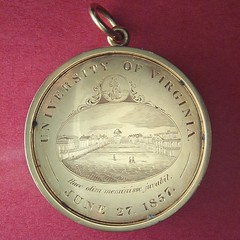
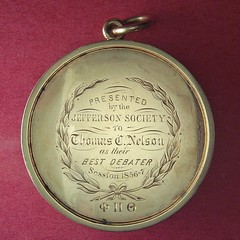
Only a small handful of engraved medals are signed by the engraver. An American example dated 1857 from the University of Virginia Jefferson Society is signed in script on the edge “Made by Canfield, Bro. & Co. Baltimore”. More on this medal and its humorous Latin inscription can be found at http://www.neocollect.com/coll/11/). A very similar and even more elaborate medal from the same society dated 1860 is not signed, though.
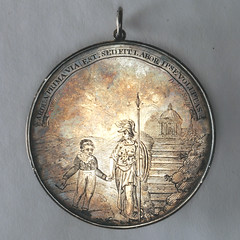

Another completely signed engraved medal is the Halloran Prize Medal, which was awarded during the 1820’s in Sydney Australia. Based on a similar unsigned medal that was also commissioned by schoolmaster Laurence Halloran in Exeter, England, it was engraved by Samuel Clayton (signed under the obverse banner “S. Clayton Delt. et Sculpt.”). Clayton, who was obviously a very skilled engraver, had been “transported” to Australia – which was then a penal colony – for banknote forgery. Halloran was there on his second trip, the first for impersonating a chaplain in the British Navy, and then for forgery on his second round. (For the complete story, see http://www.neocollect.com/coll/13/).
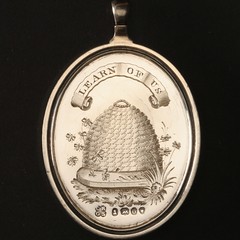
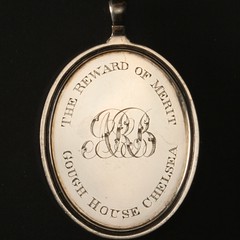
Several of the most elaborately engraved British medals from the Georgian and early Victorian periods are not signed per se but are hallmarked, as with this Gough House medal. You can often look up the silversmith in one of the many directories of silver hallmarks. Even when hallmarked, however, these medals may not have been engraved by the named master silversmith because the larger silversmith shops often had one or more journeymen and apprentices, and the engraving duties sometimes fell to these more junior people. I have only one hallmarked American engraved medal done in Connecticut in 1825 and do not know of any others.
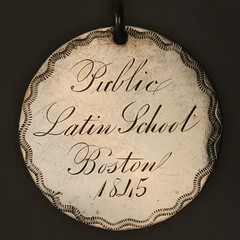

Engraved handwriting styles can often help identify a few medals as being from the same hand, but this similarity is not always definitive. For example, the long series of hand engraved Boston Latin School medals from the mid-1820’s to mid-1840’s seems to be from the same hand (see the bottom of page www.neocollect.com/coll/11/?page=4 for several examples), but there are slight nuances in the engraving style and some are clearly different. I’ve wondered if even the very similar examples may have been done by different engravers, since penmanship was a well drilled subject in grammar schools at that time. Unlike today’s emphasis on individuality, the teachers then emphasized conformity. But because of the relatively slower transportation and communication, regional stylistic differences arose and so you have, in this case, a medallic example of the “Boston Hand”.
Finally, in addition to the handwriting style which can help identify a medal to a geography and/or time period, you also see distinctive decorative details engraved on medals, such as borders or leaves. This same Boston Latin School medal, for example, has what’s called a wrigglework border, which signals 18th or early 19th century Britain or northeast America. This is a whole subject itself, for another time.
To read the earlier E-Sylum article, see: QUERY: STUDY OF ENGRAVING STYLES SOUGHT (www.coinbooks.org/esylum_v17n19a14.html)
MORE CAVE PAINTING ART IN NUMISMATICS
Good start on a list. An obvious listing would be the Norwegian 1994 1500 Kroner gold olympic coin that features a petroglyph of a skier.
French artist Edouard Righetti created medals depicting images from Lascaux in 1986. (I have only seen pictures, I would love to find a set.) A Spanish medal (alas I do not have the details, but it honors a scientist I believe) features one of the bulls from Altamira on its reverse.

I do own a James MaloneBeach bronze medal which is a clever play on cave art, or rock art as it is more commonly known in the US. His "marks" on the earth are airport maps copied from flight magazines. My specialty as an archaeologist is prehistoric art or cave art if you will. I could not pass on the opportunity to acquire the medal.
One could be tempted to add the 1959 Alexandria, Minnesota so-called dollar (H&K) 520 showing a Native American carving on a stone block.
The list can be expanded if you include standing stones (studied as part of the field in archaeology), especially a series of four medals created by British artist Ron Dutton including pieces for Stonehenge and Avebury. You could expand the list to Easter Island and its stone statues. Although not technically "cave art," all fall within the field of prehistoric art.
To read the complete article, see: MORE CAVE PAINTING ART IN NUMISMATICS (www.coinbooks.org/esylum_v17n19a11.html)
THE BOOK BAZARRE
VOCABULARY WORD: CONSIMILAR
Today I encountered the word CONSIMILAR on world numismatic forum. It was said to mean "same as other side" referring to a coin or token. i.e. What we write in token catalogs as "Same as obverse" when describing the reverse of a piece.
I requested a reference when I couldn't find the word in my 1953 Merriam-Webster New Collegiate Dictionary. Likewise it's not at dictionary.com or oxforddictionaries.com from the OED website. However, the poster came up with the following:
Collins English Dictionary:
consimilar (kənˈsɪmɪlə) Definitions
adjective
being very, or entirely, similar
Merriam-Webster
Full Definition of CONSIMILAR
: sharing in similarity or being entirely similar; specifically : having both valves alike ( diatoms )
— con•similarity noun
Webster's 1828 English Dictionary
Consimilar
CONSIMILAR, a. Having common resemblance. [Little used.]
Now I think it's a great word, but in fifty plus years of numismatics I have never seen it. How about you and other numismatic literati? Very curious if I've been missing something.
EXCURSION INLET P.O.W CAMP CANTEEN SCRIP
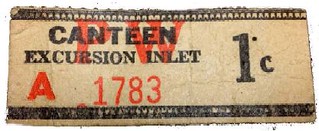 The only Prisoner of War camp in Alaska was
located at Excursion Inlet, in southeast Alaska
near Gustavus. German prisoners of war were
brought there in 1945 to dismantle the Alaska
Barge Terminal, built at an expense of $18
million. Its purpose was to provide transhipping
facilities for war supplies sent to Alaska. The supplies would come up the protected
Inside Passage. They would them be loaded on other vessels for transit to the Aleutians.
The only Prisoner of War camp in Alaska was
located at Excursion Inlet, in southeast Alaska
near Gustavus. German prisoners of war were
brought there in 1945 to dismantle the Alaska
Barge Terminal, built at an expense of $18
million. Its purpose was to provide transhipping
facilities for war supplies sent to Alaska. The supplies would come up the protected
Inside Passage. They would them be loaded on other vessels for transit to the Aleutians.
The facility was completed by November 1943, but by that time the Japanese had been driven from the Aleutians and the Alaska Barge Terminal was obsolete. The base was declared surplus less than a year after construction. It took two years to decide what to do with it.
In July of 1945, 700 German prisoners of war were shipped to Excursion Inlet to dismantle the facility, and salvage any materials that were of use. The task took until November. Many POW camps issued scrip and chits during the war, so it is not surprising that chits were used at Excursion Inlet. The piece above appeared in 2013, and is the first (and I think only) example of Excursion Inlet chits.
For more information about the newsletter, see: www.alaskararecoins.com
QUERY: WHEATCROFT COAL MINING TOKEN
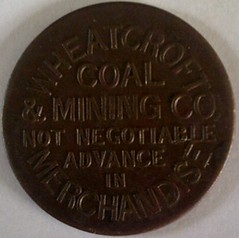
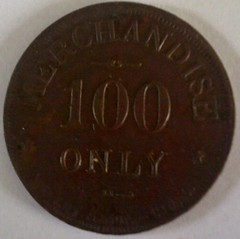
I bought a token recently inscribed
WHEATCROFT COAL MINING CO
NOT NEGOTIABLE
ADVANCE
IN
MERCHANDISE
MERCHANDISE
100
ONLY
WRIGHT & SON CIN O
I have found out that Wheatcroft was mining town in Kentucky. Wright I think were the makers from Cincinnati Ohio?
Any ideas about when this was made or what it was for? Does the 100 mean one hundred cents?
David Schenkman writes:
It is a rare token. The Wheatcroft Coal & Mining Company operated in Wheatcroft, KY, and also at Toga, KY. The company evidently went out of business circa 1908. I don’t find them listed in my 1897 mining directory, so they were only in business for a few years. Wright & Son was a major manufacturer of coal mine and merchant tokens. The description indicates that it was struck with one of Wright’s “stock” reverse dies. The denomination is 100 cents.
MARTHA WASHINGTON PATTERNS OFFERED
Ralf Böpple of Stuttgart, Germany writes:
I found these two Martha Washington "nonsense patterns" or "medalet patterns" (that's the technical term I found on the internet) in the upcoming auction of AMS of Stuttgart / Germany. I remembered that it was discussed in the E-Sylum before. The items offered are of quarter and dime size.
Martha Washington Quarter Pattern
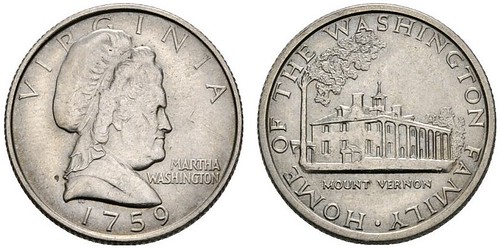
Martha Washington Quarter "1759" (minted from 1965). Bust of Martha Washington to right, including the small EC signature of the designer Edward R. Grove and the year 1759 / View of Mount Vernon (after a design by Philip Fowler). Sample embossed in copper / nickel without a value with Riffelrand in Quarter Dollar design. Judd 2116, Pollock 2092, Low R.7. 5.70 g extremely rare, minimal scratches, excellent-prägefrisch The present sample imprint was known by one (of three) in the Smith Onion Institute custody acrylic resin block, which contains the only Martha Washington-issues that should leave the Mint durable and is one of the great rarities of the modern American numismatics. The stamps have been used since 1965 for repeated sample imprints. The piece offered here was acquired on a German stock exchange in the current data, it can be speculated about the year of issue only. This is obviously the first 3 Martha Quarter Dollar Coin, which is offered in an auction.
To read the complete lot description, see: www.sixbid.com/browse.html?auction=1300&category=27140&lot=1200321
Martha Washington Dime Pattern
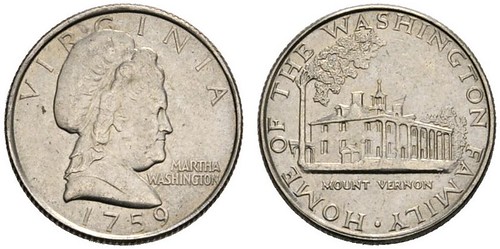
Martha Washington Dime "1759" (minted from 1965). Bust of Martha Washington to right, including the small EC signature of the designer Edward R. Grove and the year 1759 / View of Mount Vernon (after a design by Philip Fowler). Sample embossed in copper / nickel without a value with Riffelrand in Dime design. Judd 2101, Pollock 2081, Low R.7. 2.28 g of the utmost rarity, especially Much like the quarterback offered in the previous number of this series are extremely rare and one of the few copies that has ever been offered at auction.
To read the complete lot description, see: www.sixbid.com/browse.html?auction=1300&category=27140&lot=1200322
To read the earlier E-Sylum article, see: ARTICLE DISCUSSES U.S. MINT'S TEST DIES (www.coinbooks.org/esylum_v15n37a18.html)

WOMEN ON ANCIENT COINS
Much like Americans, Republican Romans had a deep-rooted prejudice against depicting living people on their money. It was something that pretentious Greek kings and tyrants did. When Julius Caesar violated this taboo, his assassins claimed that he was trying to make himself a king. And yet, within a few years, Brutus struck his own portrait on coins to pay his army – the famous “Ides of March” denarius.
The civil wars that tore the Republic apart (49-30 BCE) saw dramatic social change, including changes in gender roles. Female figures had appeared on Roman coinage for centuries, but these were goddesses, personifications, or legendary figures like the Vestal Virgin Tarpeia, who appeared on a denarius in 89 BCE.
Written by men, Roman history reflects the values of a rigidly patriarchal society. But all those men had mothers, and most had sisters, wives, and daughters. These women are mostly invisible; we hear their voices only in brief passages men thought it appropriate–or politically correct–to record. Coins are one place where a few elite women show their faces. With some imagination (and much digging through books), we can try to recover their stories.
Formidable Fulvia
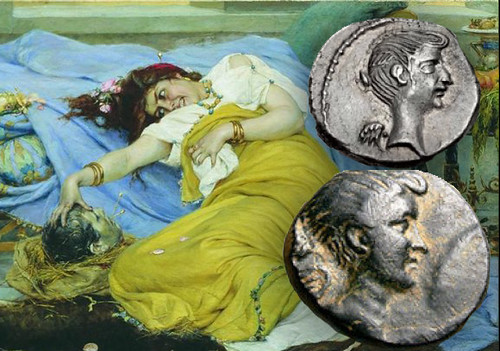
Born about 83 BCE, Fulvia Flacca Bambula married three powerful politicians who all died violently.
In the civil war that followed Caesar’s assassination, Fulvia found herself in charge of Italy as the men went off to build empires and fight in the East. This brought her into conflict with Octavian, Antony’s rival for power.
Around this time, the Roman mint at Lugdunum (now Lyon, France) struck silver coins depicting the goddess of Victory with the features of Fulvia. She became the first living Roman woman to appear on a coin.
Octavia the Younger, Sister of Augustus

Born in 69 BCE, Octavia was the daughter of a Roman senator and Atia Balbia Caesonia, Julius Caesar’s niece. She was the older sister of Octavian (born 63 BCE – Roman families were stubbornly consistent about personal names).
Despite her beauty and strong character, Octavia lost the competition for Antony’s heart to the Queen of Egypt.
Livia Drusilla

Livia’s portrait, never explicitly identified by an inscription, appears on the coinage of Tiberius. On the reverse of the denarius, she sits enthroned as Pax, the personification of peace, holding an olive branch. On some dupondii, she is identified as SALVS, or Salus (“welfare” or “safety”).
Livia was the first Roman woman granted the title of Augusta (empress).
To read the complete article, see: Ancient Coin Insights: Real Roman Women on Coins (www.coinweek.com/featured-news/ancient-coin-roman-women-on-coins/)
BALDWIN’S ARIELLE COLLECTION PART TWO
The concluding part of the celebrated Arielle Collection saw bidders from across the globe pushing prices to new heights in A. H. Baldwin & Sons Ltd’s sale on Tuesday 6th May. Achieving a sale total of £984,996 it brought the final total for the whole collection to an impressive £1,490,088.
Randy Weir, Baldwin’s Canada Representative and The Arielle Collection cataloguer said; “The Arielle Collection was one of the most impressive British Colonial collections ever created and has shown that a concentrated auction of top quality items will achieve top prices. Today we have seen a whole new type of collector in the market for whom catalogue estimates or even past auction results are of little significance when it comes to attaining the most prized coins.”
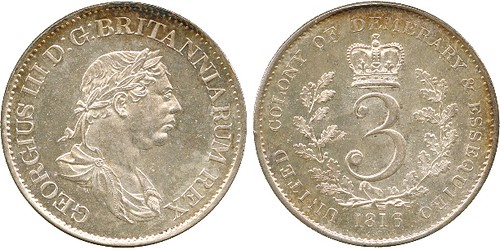
The sale saw coins achieve ten times their pre-sale estimate, with a very strong internet market as well as dealers from Canada, US, Singapore and Cyprus, attending who were buying for their clients or just bidding for themselves to take home coins that they so rarely see in these grades.
A room of eager bidders battled with the competitive internet market to take home an Essequibo and Demerara 1816 George III 3-Guilders, of British Guiana. This mint coin, which has remained in exceptional condition for the last 198 years, topped the coins in the West Indies section and the sale as a whole. It sold for an impressive £22,800 to a collector in the room. [Lot 691]
Bidding on coins from the Asian Territories was also competitive with an Edward VII/Victoria unique Ceylon copper four piece mule proof set selling for £12,980. [Lot 364] The term ‘Mule’ describes a coin with obverse and reverse designs that are not usually seen together, often intentionally produced or produced by error. This set comprised ¼ cent, ½ cent, cent and 5 cent and as no large copper 5 cents were struck as proofs or circulation strikes for Edward in Ceylon, and due to the work involved, this set is must have been produced for someone with serious influence.
For more Information about Baldwin’s, see: www.baldwin.co.uk
NUMISMATIK LANZ AUCTION SALE 158
 5 June 2014
5 June 2014
Numismatik Lanz, München
Auction sale 158
Numismatic Rarities
On 5 June 2014, more than 1,000 lots will be called out in auction sale no. 158 of Numismatik Lanz. The spectrum covers a broad range, from antiquity with Celts, Greeks, Romans, Byzantium to the modern times with focuses on medieval coins and Salzburg, not to forget some significant rarities from the Netherlands and Switzerland.
18 Celtic coins kick off the auction sale. They include some rarely encountered types from Noricum, some of which come in an unusual state of preservation, like, for example, a tetradrachm of the ‘facing head-type’, on which the winged male head on its obverse can be clearly viewed thanks to it being unusually well centered (3, about EF, 2,500 euros).
Next in line are the more than 300 lots comprising Greek coins. Be it a signed tetradrachm from Syracuse, be it a rare fraction from Macedonia – the expert discovers many a coveted piece, with estimates as low as 120 euros. This is the starting price for an obol of the Thracian ruler Saratokos, representing the much rarer variant with the monogram on the reverse (141, VF, 200 euros).
Considerably much more will surely be obtained by the tetradrachm from Gela that was created by the Master of the Grain whose provenance reaches as far back as a Kricheldorf auction sale from 1971 (34, EF, 10,000 euros). Its estimate corresponds to the one of a tetradrachm from Syracuse, signed by Euth. and Phrygillos, interpreted by some numismatists as referring to the naval victory of the Syracusans over the Athenians in 413 (56, EF, 10,000 euros). Likewise remarkable is one the rarest tetradrachms of Hellenistic times. It comes from Cnidus and depicts Artemis Hyakinthotrophos on the reverse whose cult was introduced as late as 201 BC as is evidenced by detailed epigraphic sources (266, EF, 30,000 euros).
Especially the aficionados of rare fractions are advised to browse the catalog with care. They will find, amongst others, an obol from Sermylia whose obverse exhibits an interesting depiction of a male head with a pointed beard (83, EF, 1,000 euros), or a trihemiobol of the Mylasioi, whose origin is recently suggested to be Northern Greece where colonists from Carian Mylasa had found themselves a new home (118, EF, 1,000 euros).
In this auction, too, Numismatik Lanz is able to offer a series of electrum coins from the city of Cyzicus. The most impressive piece is an electrum stater that depicts a companion of Ares, Daimon or Phobos, in the archaic ‘Knielaufschema’. The winged beast with the head of a predator and the body of a human holds a tuna fish in its right hand (219, EF, 40,000 euros).
The Greek coin’s highlight undoubtedly are a stater and a trite of Phanes, that enigmatic coin issuer who added his signature to his coins in the last quarter of the 7th cent. B. C. The offered stater that touches upon the very heart of the mystery of the invention of money – had Phanes been a privateer, a banker, a tyrant of even a divine phenomenon? – was formerly part of the Rosen Collection and is estimated at 150,000 euros (252, EF, 150,000 euros). The trite, likewise from the Rosen Collection, harbors the same mystery, but is available for less than a third of that price (253, EF, 40,000 euros).
Let us conclude the preview of ancient Greek coins with a reference to the Seleucid coins, including some outstanding rarities, like a tetradrachm of Demetrios II from Mallos depicting Athena Magarsia on the reverse (322, EF, 20,000 euros) and a tetradrachm of Cleopatra Thea from the time of her sole-reigning in 126/5 (324, EF, 20,000 euros).
An icon of numismatics dominates the comprehensive selection of Republican coins as part of auction 158: the famous EID MAR denarius, minted by M. Junius Brutus in 42. It has a pre-sale price tag of 40,000 euros (373, ab. EF) and shows the portrait of Caesar’s assassinator on its obverse.
It is succeeded by an ample series of imperial coins from the 1st century, including almost 70 lots comprising silver and bronze coins that were being minted during the time of Augustus. They come not only from the capital and official mints such as Lyons, but from the provinces of the Western Empire as well, from Emerita in Hispania to Leptis Minor in Africa. The 2nd to the 4th centuries are likewise well-represented by gold, silver and bronze coins. The fans are likely to be delighted at a series of Syrian tetradrachms a number of which are rare.
The second part of the catalog deals with coins from medieval and modern times. The Holy Roman Empire is at the focus of attention, Lanz subsuming under this heading likewise that which other companies refer to as ‘Altdeutschland’. The piece that stands out the most is a unique thaler of Rudolph II, struck in Vienna in 1588. The gorgeous item with the abbreviated year is extraordinary, featuring the remarkably lively depiction of a double eagle as artistic achievement of the Renaissance (748, ab. FDC, 20,000 euros). In addition, a thaler of the Orsini Rosenberg from 1793 is extremely rare in this condition (870, ab. FDC, 8,000 euros).
Dispersed amongst different fields is a comprehensive collection of magnificent coins from the Middle Ages, some of which come in superb quality. Cases in point are a bracteate from Münzenberg (869, EF, 5,000 euros), a denarius from Breisach of Otto I with Duke Burkhard II (900, EF, 5,000 euros) and a bracteate from Gelnhausen displaying the portraits of the royal couple Barbarossa and Beatrix (912, EF, 5,000 euros).
Furthermore, a series Salzburg is offered for sale. It is just roughly 50 lots from the foreign countries that will be called out, but they contain some of the greatest scarcities, like a thaler of Delfino Tizzone (1583-1598) from Desana in Italy (952, EF, 10,000 euros); from the Netherlands come an undated and unique thaler of Hermann Diederich of Bronckhorst dating to 1577 (969, VF, 20,000 euros) and a very rare thaler of 30 stuiver from Groningen Ommelanden, minted in Appingedam in 1584 (974, VF, 25,000 euros); and last but not least from Switzerland a Zurich pfennig of Otto III, of which as few as ten specimens are known to exist so far (987, EF, 5,000 euros), not to forget a Zug engelthaler from 1565 (990, EF, 10,000 euros).
Please remember! Only he who participates in the auction sale of Lanz directly – be it in written form, via telephone, online or in person – is entitled to the preferential starting price of 60 %! So, make sure of planning ahead: the auction sale catalog can be viewed online at http://www.sixbid.com/browse.html?auction=1331. You may as well request a printed copy for a nominal charge of €15 at Numismatik Lanz, Maximiliansplatz 10, D-80333 Munich, email: info@lanz.com, phone: +49 / 89 / 29 90 70, fax: +49 / 89 / 22 07 62
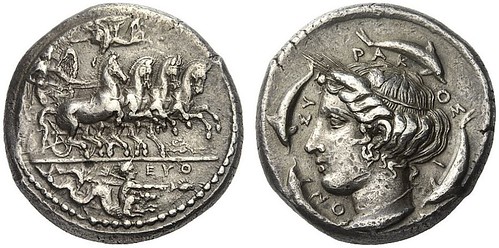
56 Syracuse (Sicily). Tetradrachm, 415-409, signed by Euth. and Phrygillos. Tudeer 57. Extremely fine. From auction sale Numismatik Lanz 24 (1983), 143. Estimate: 10,000 euros.
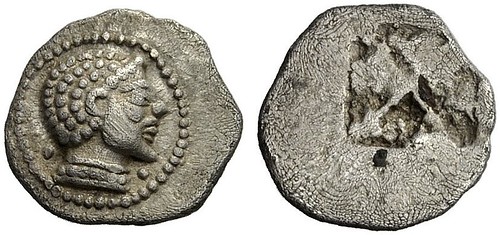
83 Sermylia (Macedonia). Obol, Milesian standard, 540-520. Tsintsifos Pangaion 3. Extremely rare. Extremely fine. Estimate: 1,000 euros.
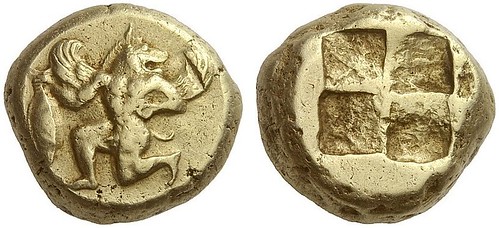
219 Cyzicus (Mysia). Electrum stater, 500-450. Fritze 123. Extremely rare. Extremely fine. Estimate: 40,000 euros.
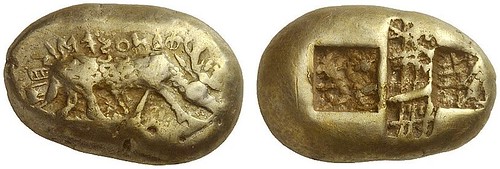
252 Phanes (Ephesos / Ionia). Electrum stater, Milesian standard. BMC 1 (same dies = Wiedauer 39). Extremely rare. Extremely fine. From Rosen Collection, New York. Estimate: 150,000 euros.
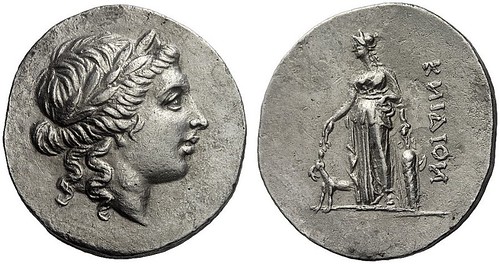
266 Cnidus (Caria). Tetradrachm, first half 2nd cent. B. C. Georges LeRider, Un tetradrachme héllénistique de Cnide, p. 155-157, pl. 18. Extremely rare. Extremely fine. Estimate: 30,000 euros.
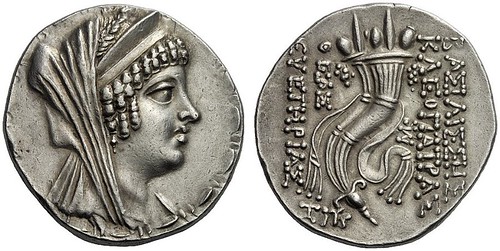
324 Cleopatra Thea, sole reign, 126-125 (Seleucids). Tetradrachm, year 187 (= 126/5), Ake-Ptolemais. Newell 84/7. Very rare. Extremely fine. Estimate: 20,000 euros.

373 M. Iunius Brutus, + 42. Denarius, 42, mobile field mint in Asia Minor or Greece. Cr. 508/3. Extremely rare. About extremely fine. Estimate: 40,000 euros.
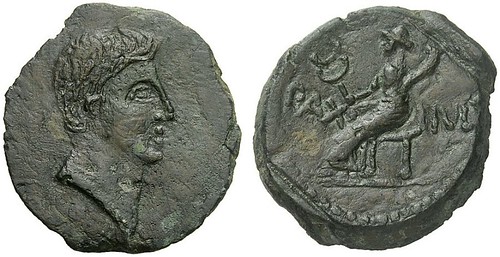
405 Augustus, 27 B. C. – A. D. 14. Pax Iulia (Lusitania). As, 15-14. RPC 52. Extremely rare. About extremely fine. From auction sale Herrero 2003, 160. Estimate: 3,600 euros.
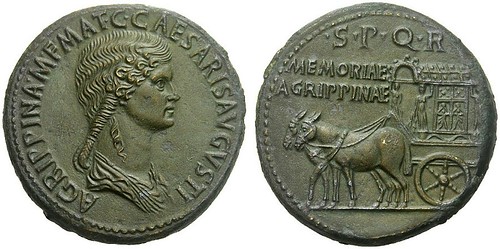
484 Agrippina Maior, + 33. Sestertius, undated. RIC 55. Extremely fine. From auction sale Numismatik Lanz 149 (2010), 347. Estimate: 10,000 euros.
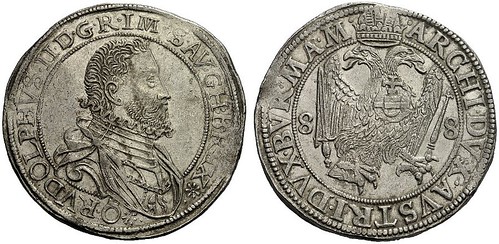
748 HRE. Rudolph II, 1576-1612. Thaler, Vienna, 1588. Unique specimen. About FCD. Estimate: 20,000 euros.
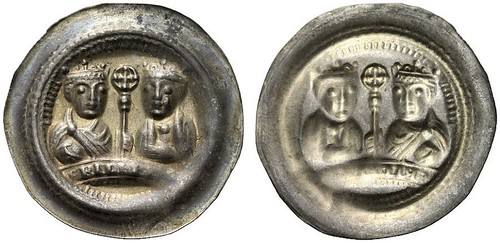
912 Gelnhausen (Germany). Frederick I, 1155-1190. Bracteate. Hävernick 49. Extremely fine. Estimate: 5,000 euros.
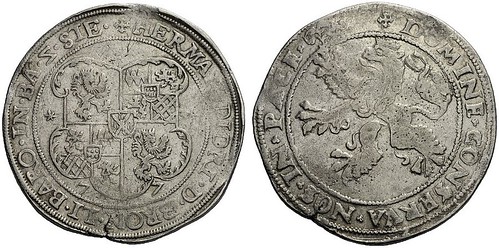
969 Batenburg (Netherlands). Hermann Diederich von Bronckhorst (1573-1602). Thaler 1577. Unedited unique specimen. Very fine. Estimate: 20,000 euros.
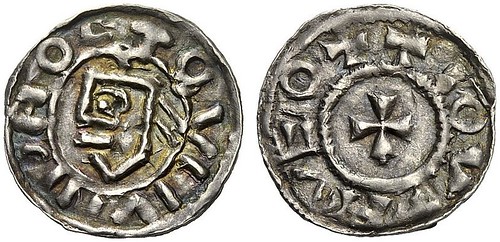
987 Zurich (Switzerland). Otto III (973-1002). Pfennig. Dannenberg 1268. Only 10 specimens known so far. From Dr Robert Friedinger-Pranter Collection. Extremely fine. Estimate: 5,000 euros.
GORNY & MOSCH JUNE 2014 GEMS AND CAMEOS
25-26 June 2014
Gorny & Mosch, Giessener Münzhandlung München
Auction sale 222: Ancient Art
Auction sale 223: Ancient Jewelry / Gems, Cameos, Seals
Gorny & Mosch re-discovers an old collecting field: engraved gems and cameos
AMUGS, that is how the most renowned series of numismatic monographs in Germany published by the German Archaeological Institute is abbreviated. AMUGS stands for ‘Antike Münzen und geschnittene Steine’ (English: Ancient coins and cut stones), which is an interesting choice of title in the light than not a single volume was ever published dealing with the latter. When the title was formulated, in 1969, it referred to an age-old combination: by tradition, every coin cabinet not only housed coins and medals but likewise gems, cameos and seals.
That simply may have had something to do with the sizes since both material genres comprise objects of a rather minor format that were stored in the one and the same cabinet as early as Renaissance times. Perhaps the registrars likewise kept in mind that the art of cutting stones on the one hand and the art of cutting dies on the other hand are so closely related to each other that these activities were often performed by the same artists.
Munich auction house Gorny & Mosch, specialized in coins and medals, is now going to auction off a collection comprising 250 cameos, gems and seals in its auction sale 223, which will be of interest not just to the collector of ancient coins: after all, a major part of the items was created in the periods of Baroque and Classicism, and they reflect not just classic topics and figures but contemporary ideas as well.
A case in point is the virtual gem of the collection, a cameo in white agate, set into a large polished amethyst (1157; estimate: 10.500 euros). The magnificent item presumably depicts Raymond Poincaré who so rigorously disapproved of anything German before, during and after WWI and who became the driving force behind the occupation of the Rhineland. This piece of jewelry, mounted as a brooch in gold and platinum and embellished with brilliants, was designed by one of the most famous jewelers of the 19th century, by Maison Mellerio at Paris that continues until the present day to sell expensive jewelry in glamorous Rue de la Paix and that celebrated its 400th anniversary in 2013.
In ancient tradition, the Renaissance rediscovered the ancient custom to express one’s beliefs in a signet ring bearing some kind of elaborate depiction. Hence, the images cut into the stone, representations of deities, historical figures and saints like Athena and Dionysus, of Socrates and Alexander the Great or Ignatius of Loyola became a manifestation of its wearer’s attitude to life. The portrait of Poincaré on a brooch, too, expressed the political attitude of its wearer – be it a man or a woman -, for everyone plain to see.
The accomplished design of these gorgeous items is in no way inferior to its models of ancient times: let us look for example at a cameo from 16th century-Italy that once was part of the collection of a Russian prince. It depicts a wine-intoxicated Silenus whom a satyr tries to right. The Dionysian setting is framed by further satyrs as well as a billy-goat and a donkey (1178; estimate: 5,000 euros). Generally speaking, the drunken entourage of Dionysus was very popular as subject, as evidenced likewise by a large, oval-shaped cameo made of sardonyx, that was being produced in the second half of the 17th century. The cameo exhibits the bust of a wine-intoxicated Silenus with the facial features of Socrates, an association that goes back as late as Plato who already drew that parallel when he thought about the bald head and the large nose of his mentor (1162; estimate: 6,000 euros).
To more heroic times takes us a cameo made of bloodstone made in Italy at the end of the 18th century with the depiction of the cuirassed bust of Menelaus. By the way, that subject wasn’t invented all of the blue but refers to a detail of the Pasquino Group so famous with archaeologists: the moment Menelaus spots Hector approaching when he is just recovering the body of dead Patroclus (1215; estimate: 7,000 euros).
Naturally, Gorny & Mosch not only offer the modern pieces but their ancient models as well. That department’s highlight is a large quartz cameo with a depiction of Gorgo, rich in detail and rendered in a highly three-dimensional manner, which probably was worn as an apotropaion once (1090; estimate: 5,000 euros). Of Classical beauty is a Hellenistic intaglio made of red carnelian with the draped bust of Apollo to the left (1101; estimate: 5,000 euros). Presumably everyone would like to know what the white-grey cameo offered under lot no. 1100 meant to its original owner. You see, it features an ear, held by a thumb and an index finger, bearing the writing: ‘Remember!’ (estimate: 4,000 euros).
By the way, these highlights don’t provide an accurate representation of the estimates of all objects. Ancient and modern gemstones alike can be bought for as low a sum as 200 euros. In addition, there are a good number of lots that come with rather interesting prices.
Let’s end this auction preview with an object combining ancient jewelry and numismatics, with a very special necklace: to the torques with its two ends, each bent up to form a hook, two set gold coins of Roman Emperor Philipp II, son of Philippus Arabs, are attached. Parallel pieces to this rare neck ring are housed in such important collections as the Metropolitan Museum of Art in New York or the Benaki Museum in Athens (1001; estimate: 65,000 euros).
Have we successfully teased you? Then check out the catalog on the internet at https://www.gmcoinart.de/kataloge. There you also will find auction sale 222 featuring works of Ancient Art. Gorny & Mosch gladly provides you with a printed copy as well. Request your copy at Gorny & Mosch, Giessener Münzhandlung, Maximiliansplatz 20, D-80333 Munich, phone +49 / (0)89 / 24 22 643-0, fax +49 / (0)89 / 22 85 513. The next auction sale ‘Ancient Art’ is scheduled for December 2014. Consignments are welcomed until September 2014.

1090 Large cameo made of cairngorm quartz with gorgoneion. 2nd cent. B. C. – 1st cent. A. D. 5 x 4.3 x 3 cm. The base is set into a silver plate with a boardlock standing proud on its reverse. With French export license from 2011 and exposé of Professor Dr Bernhard Overbeck. Smaller imperfections at the mounting. Estimate: 5,000,- euros
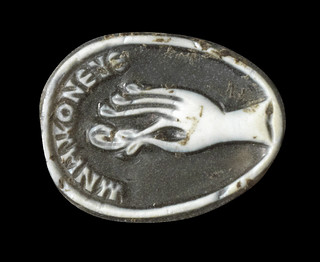
1100 Cameo with hand and Greek inscription. Roman, 3rd– 4th cent. A. D. H 1.5 cm. Tiny chips missing. Estimate: 4,000,- euros
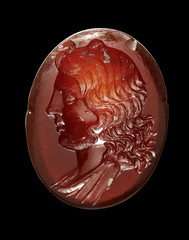
1101 Gem made of carnelian with bust of Apollo. Hellenistic, 2nd cent. B. C. B 1.8 cm. Tiniest chips. Estimate: 5,000,- euros

1144 Cylinder seal made of chalcedony. Old Babylonian, 1400-1100 B. C. H. 3.1 cm. Depiction unwind: inscription in seven columns between two men: Marduk, great lord, the god whose mercy is great, who answers the one praying, who passes fair judgments, who grants life, may your respectful servant be deluged with good health! Tiny bruises. Estimate: 2,000,- euros
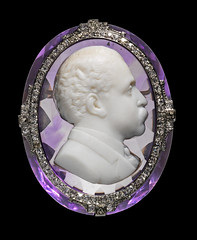
1157 Portrait of a French politician (Raymond Poincaré?). Paris, end of 19th cent. 4.4 x 3.8 x 1.6 cm. White agate layer, embedded in large, cut amethyst. Mounted as brooch in gold and platinum with brilliants. On golden setting signed MELLERIO DITS MELLER PAIX PARIS. Estimate: 10,500 euros. Intact.

1162 Bust of Silenus with facial features of Socrates. Probably Rome, 2nd half 17th cent. 5.1 x 4.1 x ca. 2.2 cm. Large oval-shaped cameo, layered sardonyx. Intact splendid specimen. Estimate: 6,000 euros.
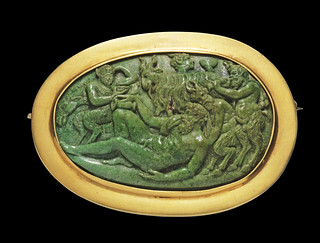
1178 Dionysian scenery with satyrs lifting a wine-intoxicated silenus. Cameo, probably malachite, mounted as brooch in modern gold frame, gold mark at the edge. Presumably Italy, 16th cent. 3.9 x 2.5 cm. Intact. Estimate: 5,000,- euros.


1184 Annunciation to the Blessed Virgin Mary / Adoration. Northern Italy, around 1500. 4.4 x 3.8 x 0.8 cm (without frame). Cameo, agate, cut on both sides, grey-brown. Decorated gold mounting with two hanging loops. Estimate: 8,000 euros. Intact.
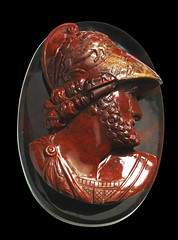
1215 Menelaus with decorative helmet. Presumably Italy, end of 18th cent. 7.5 x 5.5 x 3 cm. Large cameo, bloodstone. Tiny bruise at the lower rim of the bust, extremely fine condition. Estimate: 7,000,- euros.
THE BOOK BAZARRE
CANADIAN $2 BILL INUIT SCENE BACKSTORY
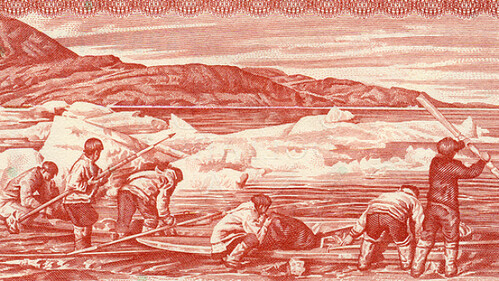
If you’re a Canadian of a certain age, you’ve likely seen the Idlout family. In fact, you’ve probably carried them around in your back pocket.
The reason: they’re featured on the back of the 1974 two-dollar bill.
Part of the Scenes of Canada series, the discontinued bank note depicts a group of six Inuit men preparing their kayaks for a hunt.
One of the men is Joseph Idlout, the grandfather of Canadian musician Lucie Idlout. On a recent episode of the CBC Radio program DNTO, she revealed how the photograph of her grandfather and his relatives came to be taken.
“My grandfather was known to be an excellent hunter,” said Idlout.
“He was one of the first few Inuit to receive the Coronation medal from the Queen - I kind of view him as a superhero, even though I never met him.”
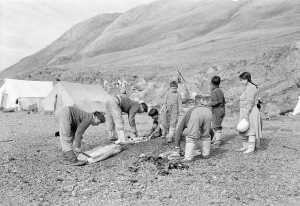 Based on a photograph taken by documentarian Douglas Wilkinson, the bill features Joseph Idlout and his relatives hunting nearby the Baffin Island community of Pond Inlet.
Based on a photograph taken by documentarian Douglas Wilkinson, the bill features Joseph Idlout and his relatives hunting nearby the Baffin Island community of Pond Inlet.
On its surface, the bill appears to reflect nothing more than an innocent scene of daily Inuit life. But dig a little deeper, and the story behind the photograph becomes much more complicated.
In the 1950s, the Canadian government relocated a number of struggling Inuit families from Inukjuak (Quebec) to the communities of Resolute Bay and Grise Fiord - hundreds of kilometres to the north.
Ostensibly done to improve their standard of living, the realities of life in the High Arctic proved difficult for families accustomed to the warmer temperatures and more fertile tundra of Quebec. To ease their transition, Joseph Idlout was hired to instruct the southern Inuit on life in the unforgiving northern climate.
As the transplanted Inuit struggled to adapt to their new surroundings, the motivation behind their relocation became increasingly clear.
“The sad story is that we were basically human flagpoles, so the Canadian government could assert sovereignty over the high arctic.”
In 2010, the Minister of Indian Affairs and Northern Development issued an apology to Canada’s Inuit people, expressing regret “for the hardship and suffering caused by the relocation.”
To read the complete article, see: 'Human Flagpoles': Dark story behind Inuit scene on $2 bill (www.cbc.ca/news/aboriginal/human-flagpoles-dark-story-behind-inuit-scene-on-2-bill-1.2632380)
THE REFORMATION ON COINS AND MEDALS
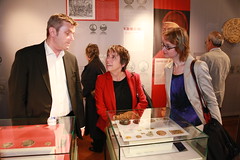 Reformatio in Nummis – Luther and the Reformation on Coins and Medals
Reformatio in Nummis – Luther and the Reformation on Coins and Medals
A special exhibition at the Wartburg, organized by Fritz Rudolf Künker
By Elisabeth Doerk
The prestigious premises of the Wartburg were the location where an exhibition of a special kind was opened on Sunday, 4 May. More than 100 coins and medals covering 500 years of reformation provided an insight into the history of Protestantism and the world of numismatics in an entertaining way. The date of the opening wasn’t chosen randomly but with care: it coincided with the anniversary of Luther arriving at the Wartburg in 1521. Thus, the special exhibition takes one of the important sites of events up since it, too, begins with an exhibit from 1521 depicting the reformer from Wittenberg.
The festive opening was celebrated in the ceremonial hall of the Wartburg. Welcoming speeches were held by Burghauptmann (Castle Captain) Günther Schuchardt, Special Envoy of the Evangelical Church in Germany for the 2017 Reformation Jubilee 2017, Prof Dr Dr h.c. Margot Käßmann, Chairperson and Director of the Luther Memorials Foundation of Saxony-Anhalt, Dr Stefan Rhein, as well as initiator and sponsor of the exhibition, Fritz Rudolf Künker. Afterwards, curator Elisabeth Doerk gave a small tour through the exhibition. The accompanying musical program, Beethoven’s “Rage over a Lost Penny” likewise touched upon a numismatic topic. Roughly 100 visitors attended the festivity and celebrated the latest exhibition with a reception held in the Wartburg café afterwards.
Not only to Martin Luther but to his contemporaries in general dealing with money, with interests and commerce were subjects of hot discussions. Due to deflation trends, people were more and more at a loss as to what their money was actually worth. Officially fixed exchange rates between the single denominations were ignored by the tradesmen, and he who wanted to pay with small coins was charged an additional fee. In addition, the minting authorities aimed at further diminishing the coins’ fineness.
Whereas the coins more and more ceased to serve as universal means of payment and value storage, another function of the coins gained in importance: conveying contents. Emperors and popes, secular and cleric rulers had had their mottos depicted on coins for centuries and used this medium for the representation of their power. The Protestant princes likewise used coins to propagate their Protestant faith on a broad scale.
In contrast to the inscriptions and depictions on coins that tended to stick to conventions to a greater extent, the depictions on medals, which served representational purposes and were given away as donatives, were much more straightforward. Since the middle of the 15th century, a new medium had come into being that was called schauthaler or, in modern language, medal. Originating from Italy where the painter Antonio Pisanello had created the very first portrait medal of a contemporary ruler, the art of designing medals also spread to the regions located north of the Alps. The free imperial cities of Nuremberg and Augsburg in particular became centers of the art of designing medals in the 16th century. The pieces enjoyed great popularity in the entire empire in the eras to come. Princes, but likewise wealthy patricians, scholars and merchants had themselves depicted on medals.
The expensive medals, however, were not for everyone to see. The specimens that had been commissioned by princes or privateers were manufactured only in small amounts and were for the most part presented as donatives to other princes, diplomats or, in a more private sphere, to friends. A baker, a peasant or a maidservant surely weren’t the ones this medium intended to address. In educated circles, on the other hand, the medals were much more sought-after. The reformer Philipp Melanchthon, for example, was a systematic collector of both ancient and contemporary medals.
The special exhibition “Reformatio in Nummis” presents a broad spectrum of coins and medals connected with the Reformation and its leading characters. “Reformation coins” and “Reformation medals” are by no means restricted to the 16th century. Thousands of different coins and medals address the Reformation and its repercussions, portray historical figures that had an impact on the course of the Reformation and refer to events that went down in the common historical knowledge. Including the jubilee and remembrance festivities on the occasion of Luther’s posting of his theses and the Augsburg Confession, the field of coins and medals on the Reformation reaches as far as the present.
A particular treat of the exhibition is the Martin Luther Medal of the Evangelical Church in Germany. With the aid of several medal design drafts and intermediate steps the manufacturing process of a piece can be reconstructed until the medal is finally finished. Personal comments provided by the artist Anna Franziska Schwarzbach invite to re-discover the medal as an artistic genre likewise of the present.
Auction house Fritz Rudolf Künker initiated and sponsored this exhibition to grab the chance to realize a numismatic presentation at a site that is visited by almost 350,000 tourists every year. Ulrich Künker says: “If we succeed in showing, even to just a fraction of the visitors, how colorful and inspiring dealing with coins can be then our investment in this project was more than worth it.”
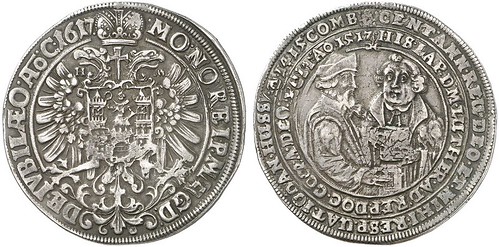
Magdeburg. Coins on the Reformation Jubilee 1617. Reichsthaler 1617. Rev. the reformers Johann Hus and Martin Luther. Dav. 5509. From auction sale Künker 237 (2013), 2308.
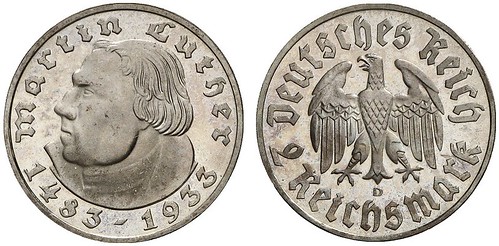
German Empire. 2 reichsmark 1933 D. Luther. J. 352. Proof. From auction sale Künker 234 (2013), 5634.
“Reformatio in Nummis – Luther and the Reformation on Coins and Medals“
4 May – 31 October 2014
Wartburg, D-99817 Eisenach
phone: +49 3691 25 00
email: info@wartburg.de
Opening hours: 8.30 a.m. – 5 p.m.
An exhibition catalog is available for purchase at the site.
MUSEUM PIO XII BRAGA NUMISMATIC EXHIBIT
 SINCE LAST MAY DAY TWO IS OPEN EXHIBITION AND COINS NOTAFÍLICA Braga (Portugal)
SINCE LAST MAY DAY TWO IS OPEN EXHIBITION AND COINS NOTAFÍLICA Braga (Portugal)
The venue of the exhibition is the Museum Pio XII Braga (Portugal) and the period ends on view September 2.
In this exhibition are exposed from Greek and Roman coins to this day: Swabian, Spanish-Roman coins, Visigoths, Arabs, of all the kings of Portugal and foreign currencies.
Here you have a video, courtesy of our friend Toninhomantorras with pictures (and great music) Inauguration:
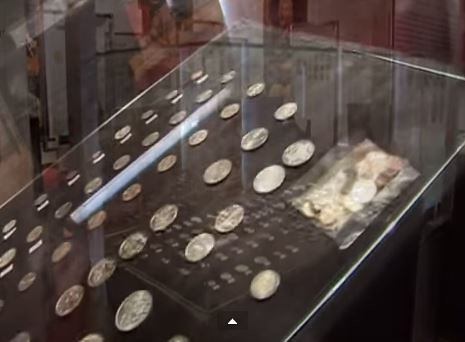
To view the complete video, see: Inauguração Exposição Numismática Museu Pio XII (Braga) (/www.youtube.com/watch?v=bpDkdGQfLiw&feature=youtu.be)
For more information, see: www.museupioxii.com

LUSITANIA SINKING: MEDALS AS WAR PROPAGANDA
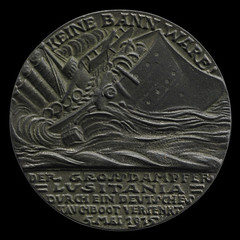
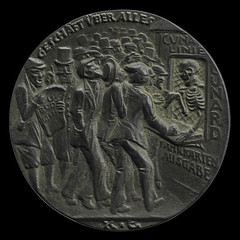
The sinking of RMS Lusitania on 7 May 1915 was a hugely significant event during the First World War. The ship was sunk by a torpedo, a fact indicative of the increased use of submarines in marine warfare, which helped it become even more dangerous than it had been previously. The tragedy of the loss of life that included civilian passengers had global repercussions that contributed to the eventual decision taken by the United States to enter the conflict. It also sparked something of a medallic propaganda war.
The German artist Karl Goetz was so incensed by the mere idea that a passenger liner might have been used for military purposes that he decided to produce a medal satirising the subject. He mistakenly stated on the medal that the date of the sinking was 5 May – two days earlier than the actual event. This caused an outcry in Britain and accusations that the sinking had been premeditated by the Germans. This use of the wrong date was in fact a mistake, but copies of the medal were made and distributed in Britain in protest against the Germans’ use of medallic art to effectively celebrate a tragedy.
The British copy had its own presentation box that also included a document detailing the reasons behind its production. Many of these medals have since found their way into the collections of museums across the country and will be featuring in commemorative displays this year and in 2015. The British Museum has an example of the German original and the British copy and both will be displayed in the new exhibition The other side of the medal: how Germany saw the First World War. Alongside my work on the Money and Medals Network, I have had some curatorial input into this exhibition curated by my colleague Tom Hockenhull.
The medal itself is a fascinating object that is laced with satirical symbolism. On the obverse, the ship is depicted sinking under the waves. Weapons appear on the deck, a direct accusation that the ship had been carrying munitions, thus putting the lives of its passengers at risk, the notion that had so infuriated Goetz. The reverse shows unsuspecting passengers queuing up to buy their tickets from a personification of Death who sits inside the ticket booth. The warnings of a German man stood in the background and the ‘U-Boat Danger’ headline on a newspaper go unnoticed by the crowd. The inscription above the scene means ‘business above all’ and makes the message of the medal doubly clear. The presence of Death playing an active and malevolent role in the events is a theme that pervaded German medallic art during the First World War and this will be explored in the exhibition.
To read the complete article, see: The sinking of the Lusitania: medals as war propaganda (blog.britishmuseum.org/2014/05/07/the-sinking-of-the-lusitania-medals-as-war-propaganda/)
NEIL SHAFER'S 'MONEY OF THE PEOPLE' COLLECTION
Throughout recorded history, civilizations have invented ways of being able to carry on normal business relationships through the use of an agreed upon means of value exchange. In most cases this value exchange has been through a medium we call money. There is always barter as well, but equalization of value can become difficult. Money, on the other hand, has the same value to all participants in whatever transactions are taking place.
The world has had many periods of local and global turbulence. One often seen result of such activity is a lack of a consistent supply of money, with the resultant difficulties of maintaining social as well as economic balance. When a currency imbalance occurs, quite often some local authority will step in and attempt to alleviate the monetary situation with some sort of locally sponsored issue in the form of a token coinage and/or an interim printing of a substitute paper currency. More often than not, this interim issue will be paper since it is a lot easier and faster to print a note than prepare a die to strike a coin or token.
The axiom I have often promulgated is a simple statement of fact: whenever a government fails to provide enough money to allow normal business activity to proceed, the people will step in and make their own. It seems that in every corner of the world there was some sort of circumstance that has brought out the need for an issue of privately sponsored paper money. A number of countries have had dozens, hundreds, and even thousands of such notes, according to the situations involved.
Issues made under circumstances as outlined above are truly Money of the People, and that has been the primary focus of my interest and involvement with the subject. Such locally produced issues would of necessity be accepted only by businesses or individuals in the affected areas. These are the pieces whose issuers say to the officials, ‘We need these notes and we will use them regardless of the current state of affairs within the government.” Issues falling into this category are at the very core of my interest just because they stem from the common people who need to do business irrespective of conditions surrounding them.
A very large percentage of these local and private notes exist because of some social disturbances. Chief among these are revolution (more of an internal war) and especially the huge upheavals caused by the worldwide conflicts. Ramifications of these activities are many and varied, from forcing a rise in bullion price or an actual shortage of metal for coin production to the inability to supply paper currency through the usual channels of distribution.
There are other kinds of local notes, those made either for convenience or as a means of retaining power over a certain segment of the population. By this I mean various paper money issues created because of a strictly local need (as with a hospital in some remote location) or some scrip issued by large farms or haciendas that maintained their own shops where only their own money could be spent. In effect, those individuals receiving such private notes as pay were forced to use them in company stores, since no other place would accept that company’s scrip issue. While I feel these kinds of notes have a place as well in my collection, I am fully aware that the reasons for their existence are not the same as with notes described previously.
Yet another offshoot of the private/local paper money scene is the collecting of certain kinds of government-sponsored issues that have a limited circulation. Examples of such notes would include the leprosarium pieces from Venezuela, the NKVD camp issues from Soviet Russia, and the sets of tourist and camp notes from Yugoslavia dated 1951. In short, the interest includes anything from anyplace that is out of the ordinary.
Seeking notes for this collection has had more than its share of asking, searching dealers’ stocks, finding other collectors willing to trade or sell, monitoring auctions where some amazing offerings will show up at times, and just being in the right place at the right time. I am convinced that luck plays a significant part of building any specialized collection, and so it is with this one as well. I will cover some of the more significant pieces that I have enjoyed the most.
Neil adds:
The two items I'd like to highlight are, first, siege of Leyden 1574 round die-struck paper, the first paper money of Europe. I would add the term "inadvertent paper money" to this piece, as while it is money made of paper, it is not paper currency as we understand it.
The second piece I would like to highlight is a 1-Ruble note issued in Harbin, China by a Chinese merchant named Vian Fa-chen. Its text is all in Russian; time of issue ca. 1919. There are several denominations with similar design. Such store issues are extremely popular with both Chinese and Russian collectors, plus the fact that they are also extremely difficult to locate. The auction will contain representatives from three such stores in Harbin and one similar store operated by a Japanese businessman in Nikolaevsk-on-Amur.
COIN DESIGN COMPETITIONS
The Japanese Mint announced this week a coin design competition among world artists. To their credit it is well planned and open to artists of all kinds -- provided the artist is able to produce a plaster model of their design if theirs is a winning design.
Of the two kinds of such competitions -- open to all or closed by invitation only -- this is an open competition There are advantages and disadvantages to both kinds. Such competitions do elicit participation, but often the designs are unsuitable, both artistically and to the constraints of coin production.
Competitions frequently find fresh new talent, but these artists woefully lack the technical skill to produce a satisfactory model for die striking. If a mint is willing to accept whatever it receives -- and modify the design for necessary technical production -- then open competitions can be used.
Wisely, the Japanese Mint chose this competition to be in two stages. The first step is for artists to submit a drawing (rules spell out two circles 120 millimeters diameter side-by-side for obverse-reverse).
Among all submitted designs the jury, composed of one metal sculptor and three Japanese Mint officials including present and former chief engravers, will select five semi-final winners. These artists will be required to prepare plaster models of their designs.
First prize, "Most Honorable Work," will receive about $4,900 prize (500,000 yen),. Second prize will be called "Excellent Work" and 200,000 yen. The other three are delegated "Fine Work," and 100,000 yen.
This plan is farsighted. In previous design competitions plaster models could be submitted. Those that didn't win were returned to the artist who often adapted the design for other work, or the models remained in the artist's studio until his death and the models sold on the open market.
A second category was offered by the Japanese Mint for student work. Similar rules with one 50,000 yen prize and the title "Future Designer."
Many American coins have been designed by competitions with mixed results. A news clipping in my files from 1853 reveals the U.S. Mint seeking coin designs from American artists. Nothing happened. In 1892 a similar appeal occurred from the Mint Nothing happened. It was not until the National Sculpture Society acceded to the Mint's appeal that their members came forth with coin designs -- Brenner cent, Fraser nickel, Weinman dime and half dollar, MacNeil quarter, de Francisci dollar.
In 1937 another contest for the nickel gave us Felix Schlag's design. Even so, it was dramatically modified on the reverse before placed into production. The 1976 bicentennial coinage was another design contest. But the biggest design competition of all was conducted by the Franklin Mint in 1974 for fifty state bicentennial medals.
Inquiries abbot the Japanese contest can be addressed to:
CDC 2014 Secretariat, Japan Mint
Fax: +81-6-6351-6529
Email:
THE BOOK BAZARRE
JERSEY COIN HOARD EXTRACTION DONE IN PUBLIC
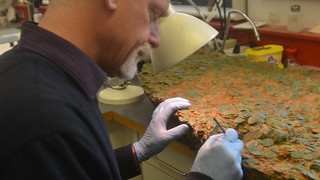 Jersey Heritage Trust conservator Neil Mahrer and his team will work inside a large glass room - on view to the public.
Jersey Heritage Trust conservator Neil Mahrer and his team will work inside a large glass room - on view to the public.
The hoard was discovered by two metal detector enthusiasts and is thought to contain some 70,000 coins.
The exhibit will also feature other artefacts from the same era.
Mr Mahrer said it would be painstaking work but it was an incredible opportunity to find out about our past.
His work may also be shown through a live feed to the museum's audio visual theatre.
He said: "It will be removing coins from the surface of the Earth right through to the bottom of the hoard. People will be able to see every step of the work.
"We knew it would be a long job and so we thought we would do it in public. We are rebuilding the lab we have at the archive in the middle of the exhibition at the museum.
"Eventually there will be people working on the hoard 9-5 six days per week behind there. You will be able to see people removing the coins, treating them in acid to remove corrosion and using hand tools."
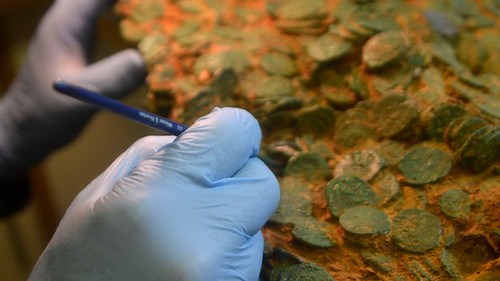
To read the complete article, see: Jersey coin hoard extraction done in public (www.bbc.com/news/world-europe-jersey-27309022)
THE TYRANT COLLECTION
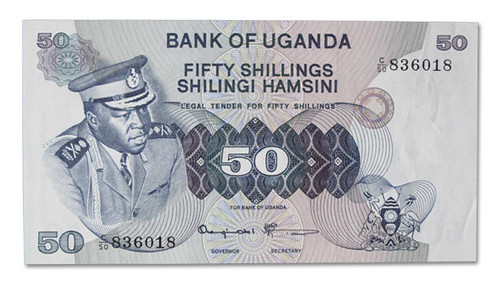
Image from monowolf.com/2013/09/blood-money/
I was walking down London’s Cecil Court—the haunt of people of slightly Aspergerish disposition who collect rare, though not the very rarest, books— yesterday, when I stopped at the window of a seller of banknotes from around the world. I have always liked banknotes as physical artefacts, and have kept one or two from the foreign countries that I have visited (I am not so much a collector as an accumulator).
There was displayed in the window what was called “The Tyrant Collection”: six colorful banknotes marked with the portraits of various tyrants. It was cheap and I decided to buy it, which is really against my principles. Normally, I keep only banknotes of the countries I have visited, from the time I have visited them. Among them, of course, are banknotes with portraits of tyrants: Baby Doc, Julius Nyerere, Mobutu Sese Seko.
I went in. A very pleasant lady asked me whether she could help me. I asked whether the Tyrant Collection were still available. She said that it was, and then turned to the other assistant in the shop.
“Can you pass me a Tyrant?” she asked, and he did so in a transparent plastic envelope.
Among the things I accumulate are striking utterances that express a great deal in a few words, and among them now, engraved on my mind, is “Can you pass me a Tyrant?” Could anything better express the fleetingness, the vanity, the absurdity, of great power? Furthermore, it told me that the Tyrant Collection was, relatively speaking no doubt, a commercial success, and that I was far from alone in my taste.
“Are you a tyrant yourself, sir?” asked another customer.
“No, sir,” I replied, “I am not.”
“An aspiring tyrant, perhaps?”
I told my fellow-customer that I was not an aspiring tyrant.
“A domestic tyrant, then?”
“My wife is with me, she can answer for me.”
If I had been a tyrant I should, of course, have said “She must answer for me.”
In addition to the tyrants in the collection—Idi Amin Dada, the Ayatollah Khomeini, Saparmurat Niazov, Saddam Hussein, Mao Tse Tung, and the one who makes the others seem like soulmates of Rand Paul, Kim Il Sung—I bought the last banknote issued under Colonel Ghadaffi’s regime, with a picture of the Colonel himself, dressed oddly as ever, with a kind of sheet over his head almost like a medieval wimple, à la Rogier van der Weyden or Roger Campin. Neither could I resist a banknote for Zimbabwean $50,000,000,000,000. Oddly enough, I remember a time when the Zimbabwean dollar was worth as much as the US dollar, and the design of the banknote had changed comparatively little since then: I have it still.
To read the complete article, see: From Sir, With Love (takimag.com/article/from_sir_with_love_theodore_dalrymple#axzz30zAWjeYy)
FEATURED WEB PAGE: BLOOD MONEY
This week's Featured Web Page is the Blood Money page from Monowolf.com.‘IN this country, you got to make the money first. Then when you get the money, you get the power. Then when you got the power, then you get the women‘, Tony Montana explained on a poolside in Miami. If you are a dictator, it’s the other way around: first you got to have the power, then you get the money. Your own money.
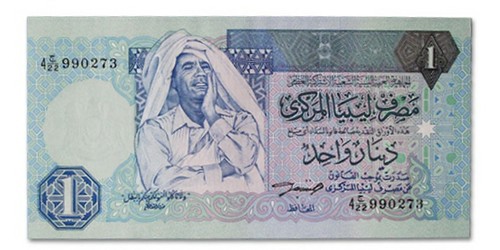
Muammar Gaddafi (1949 – 2011)
monowolf.com/2013/09/blood-money/
